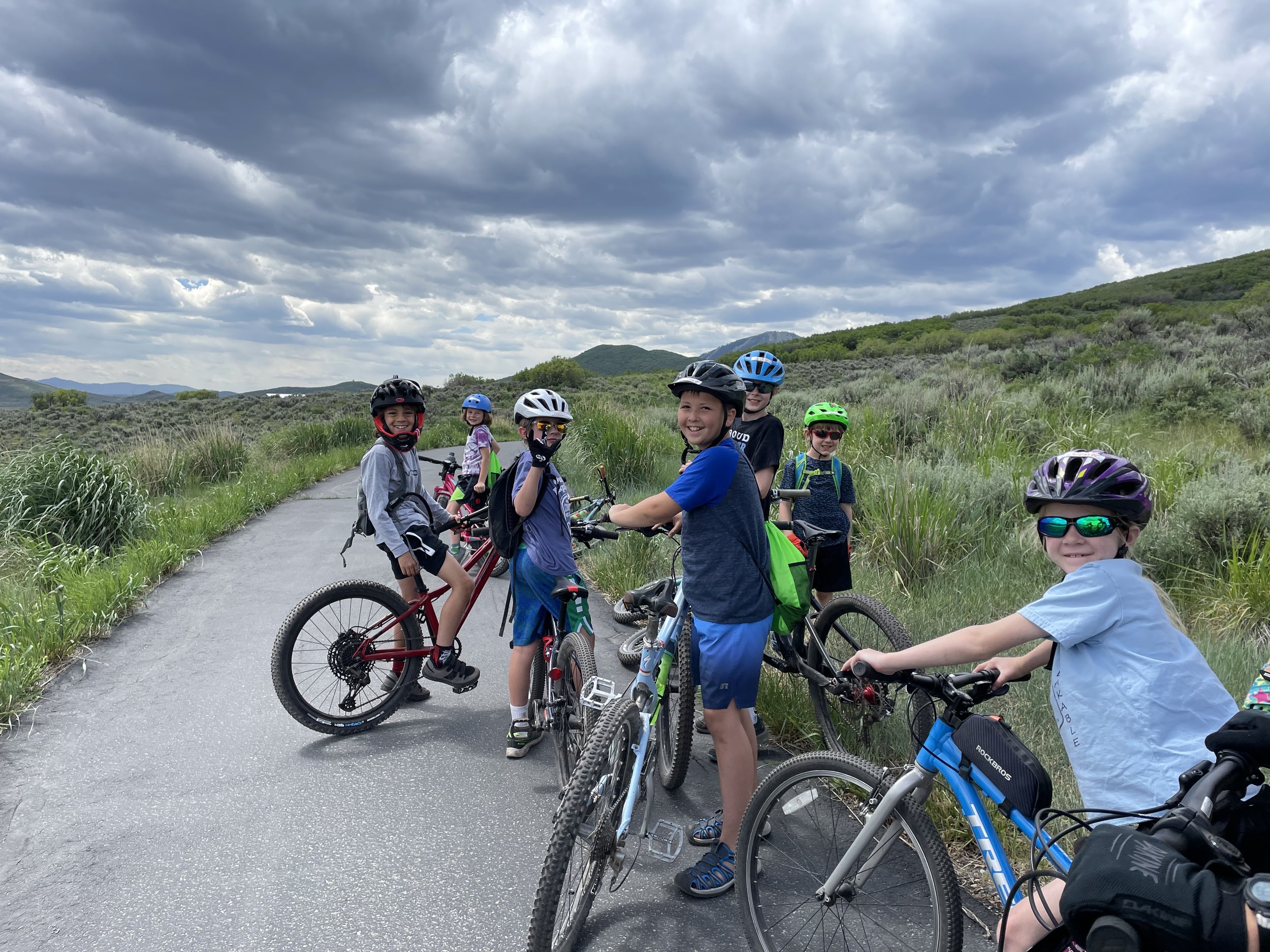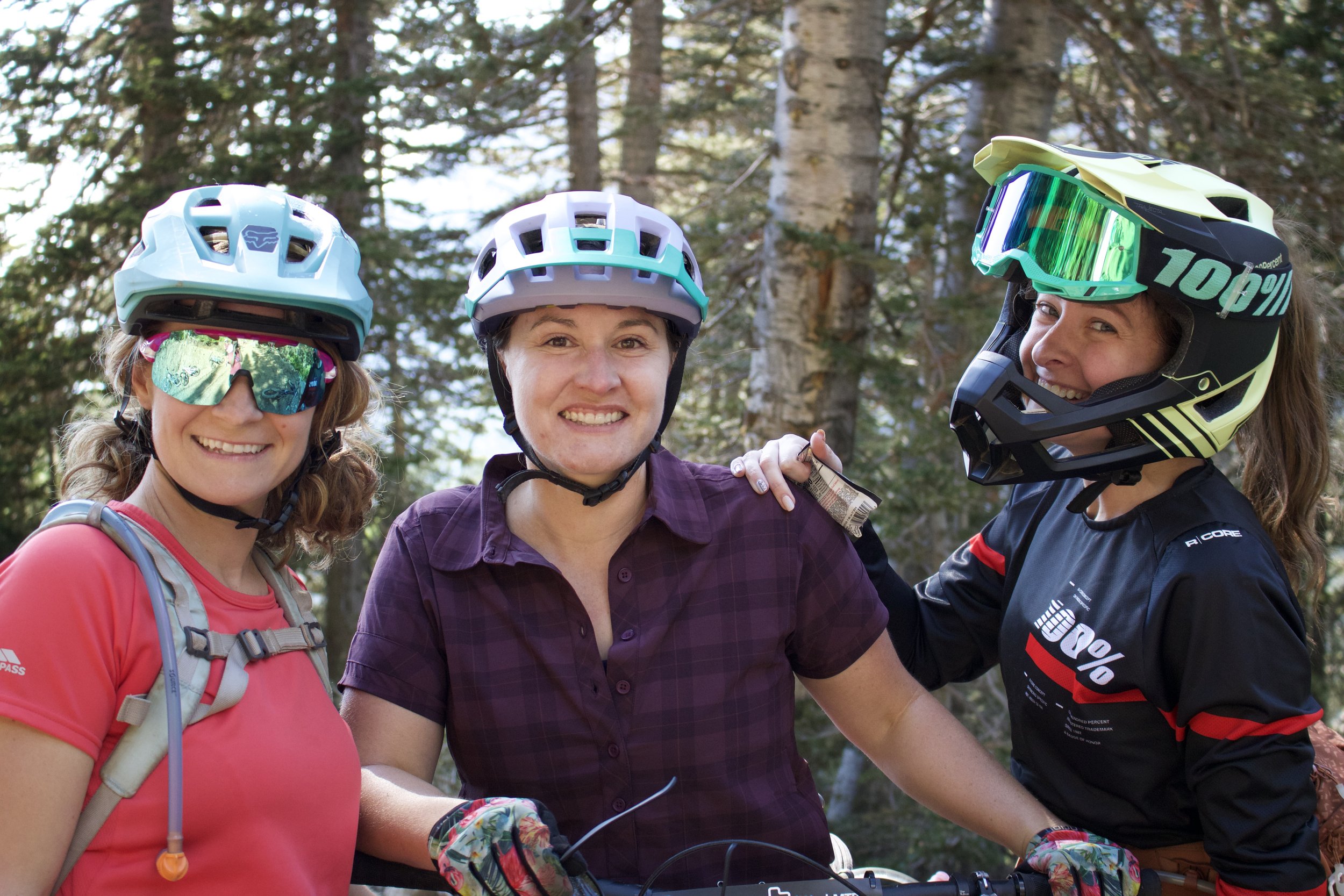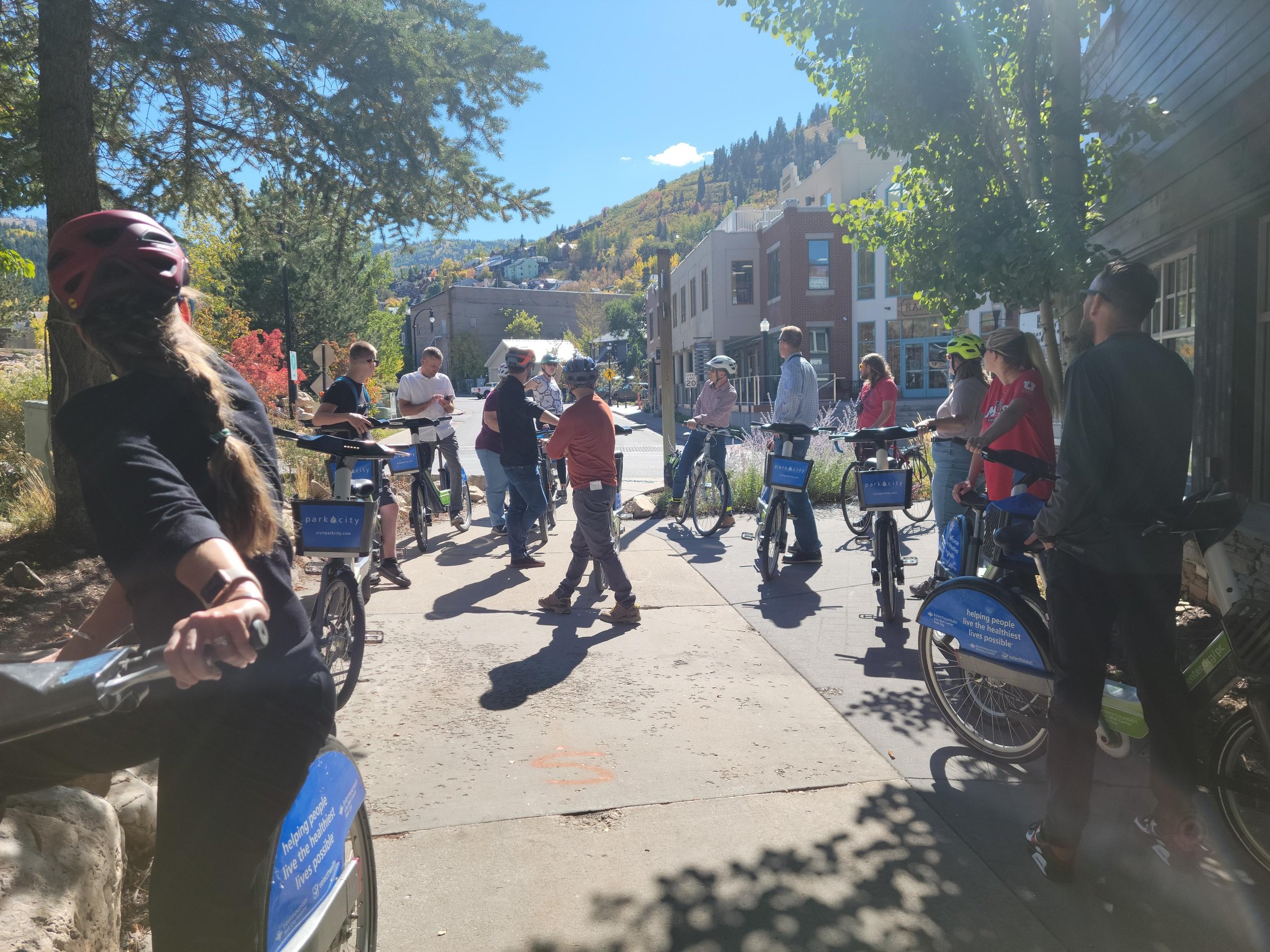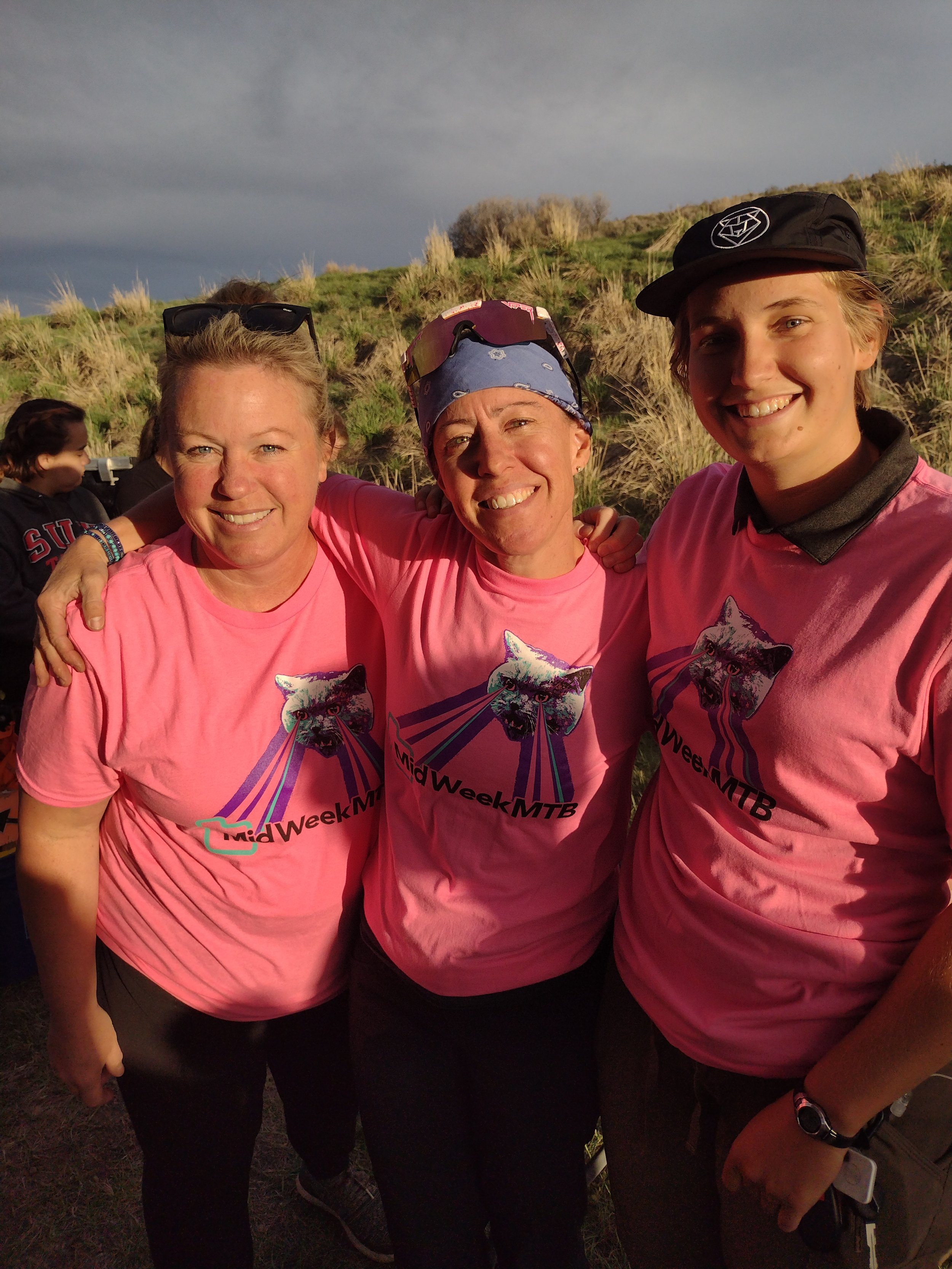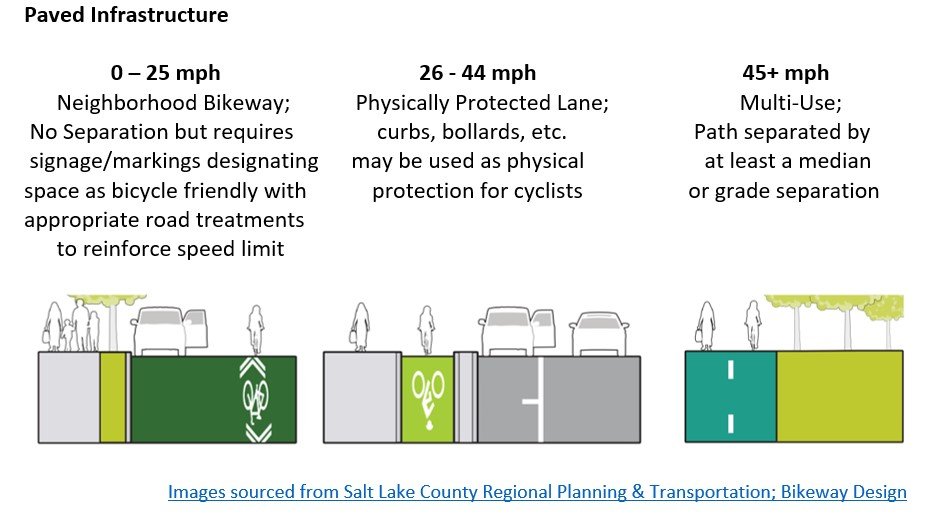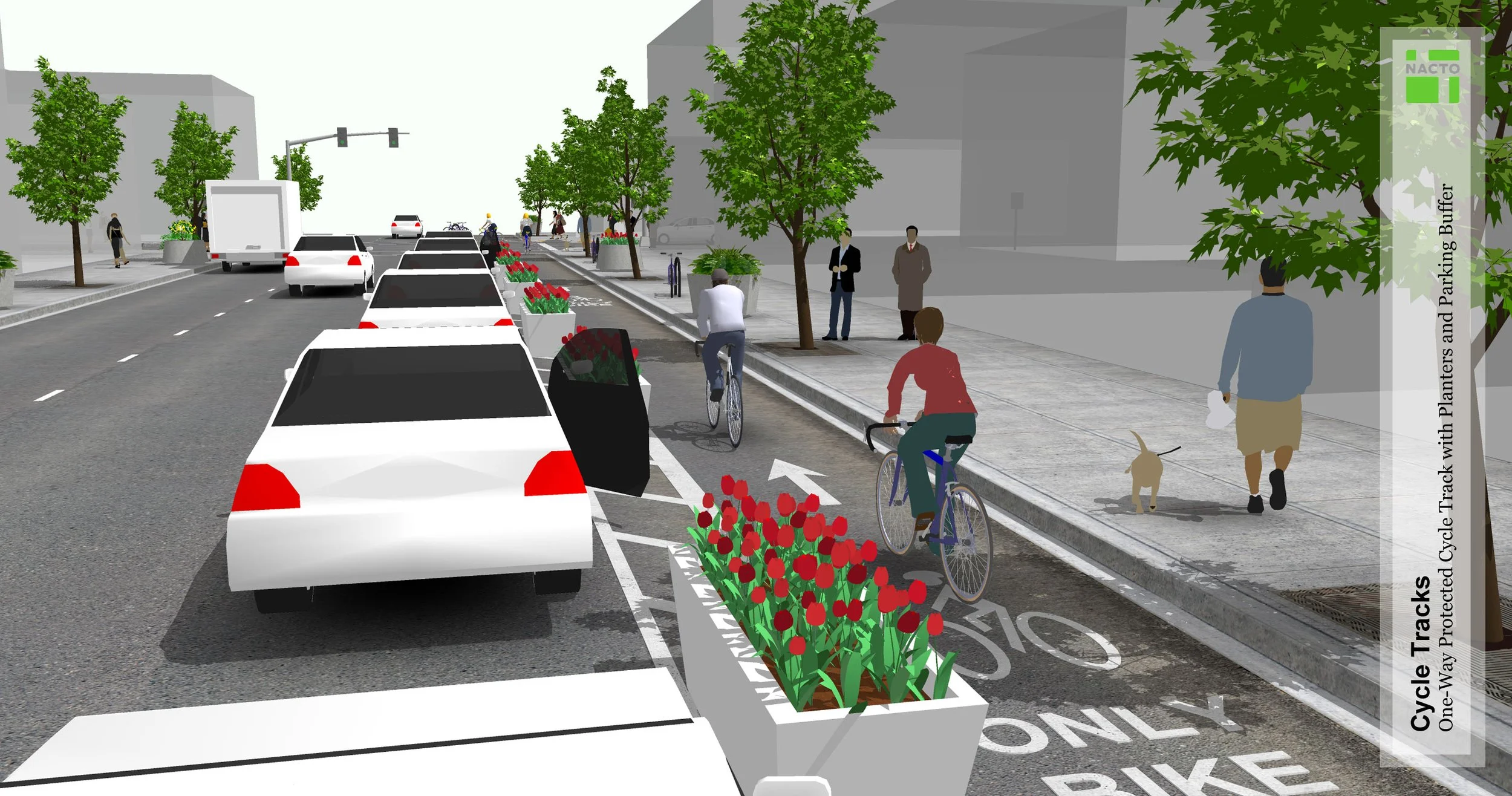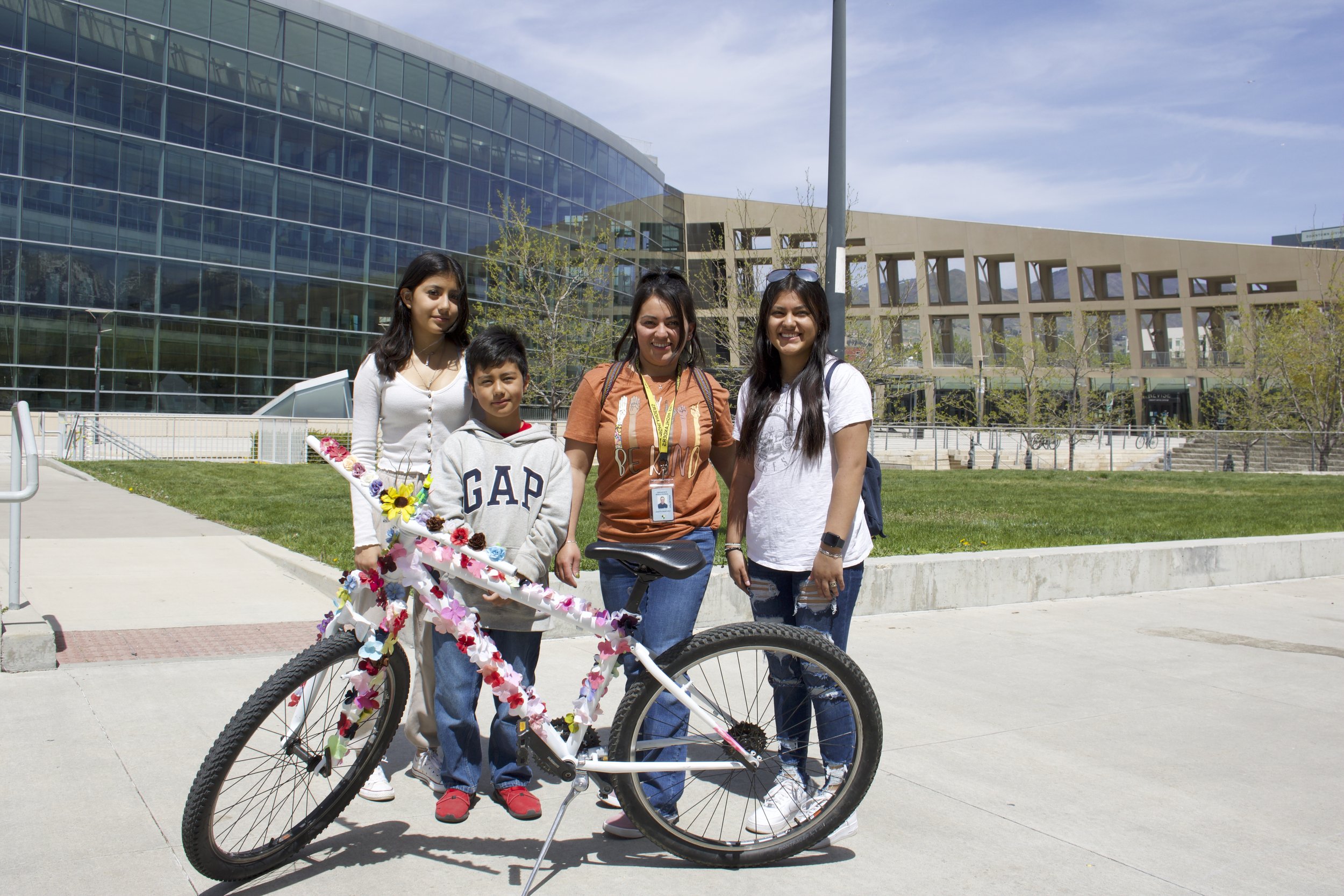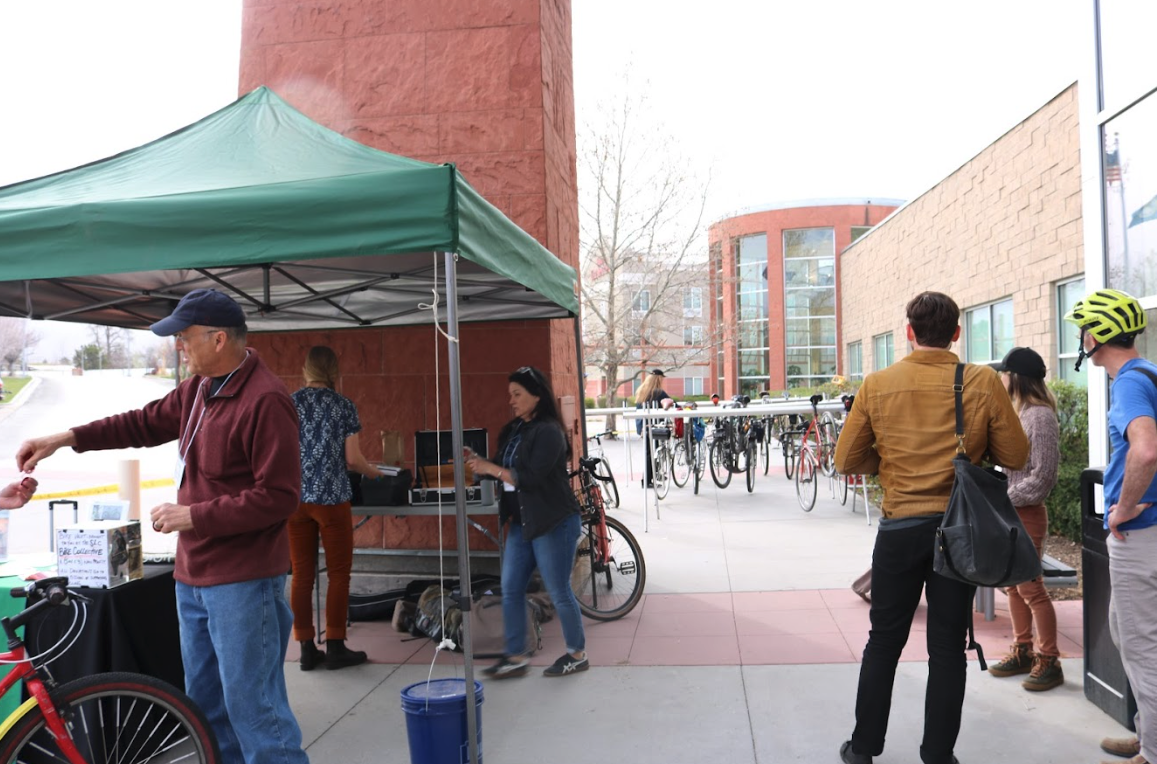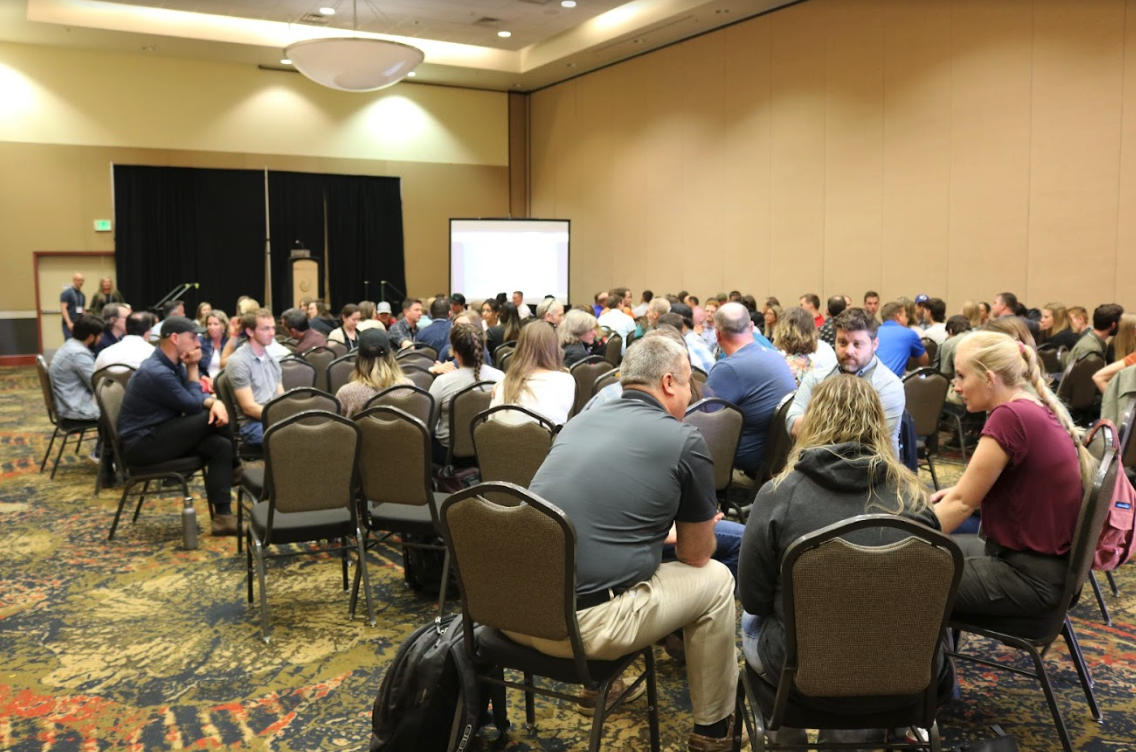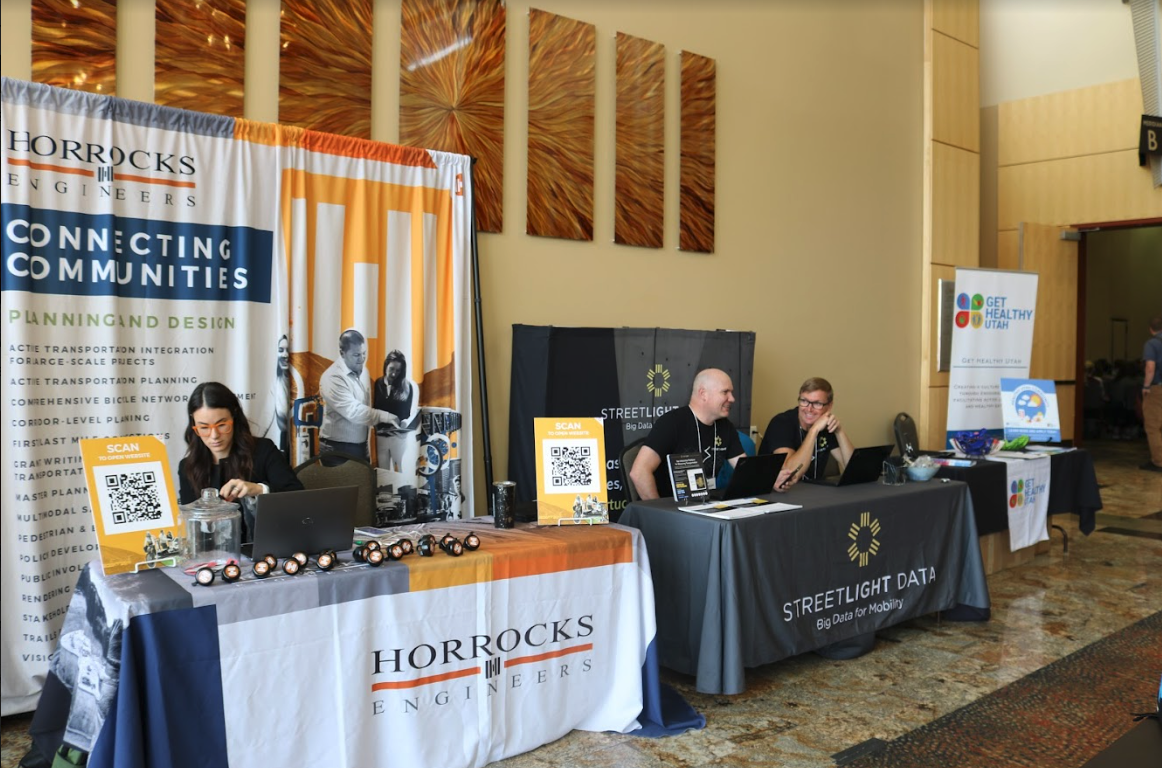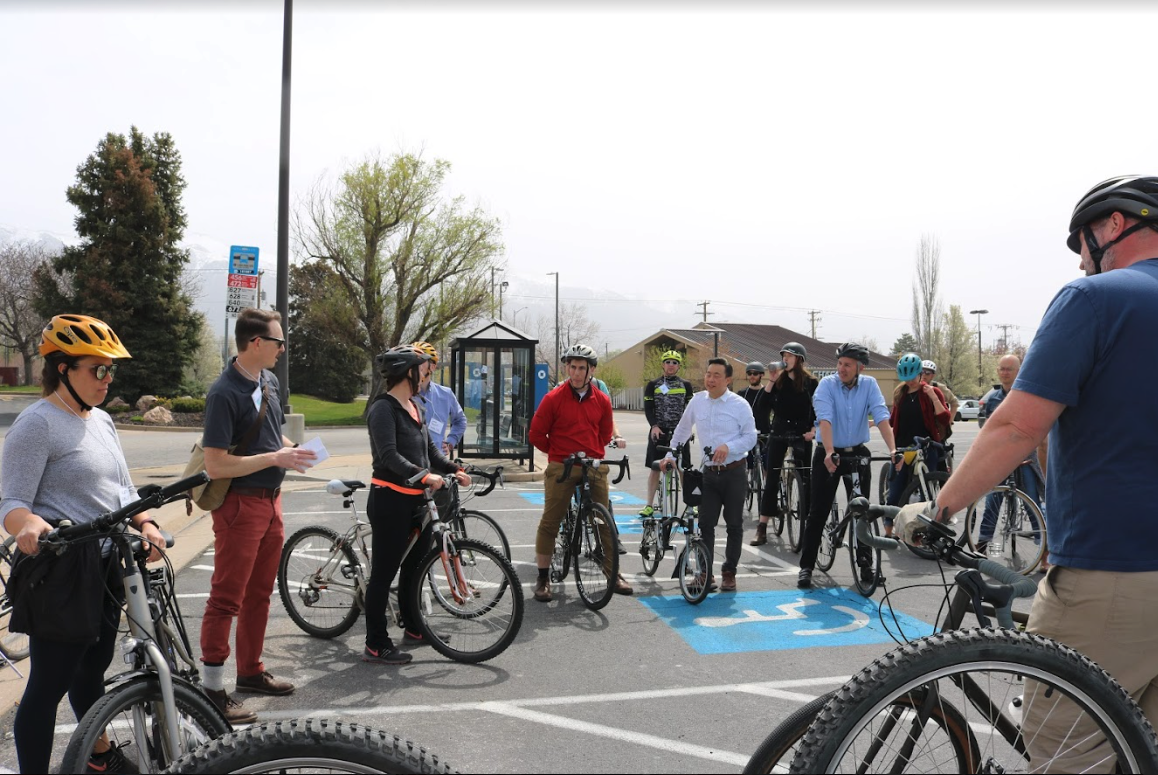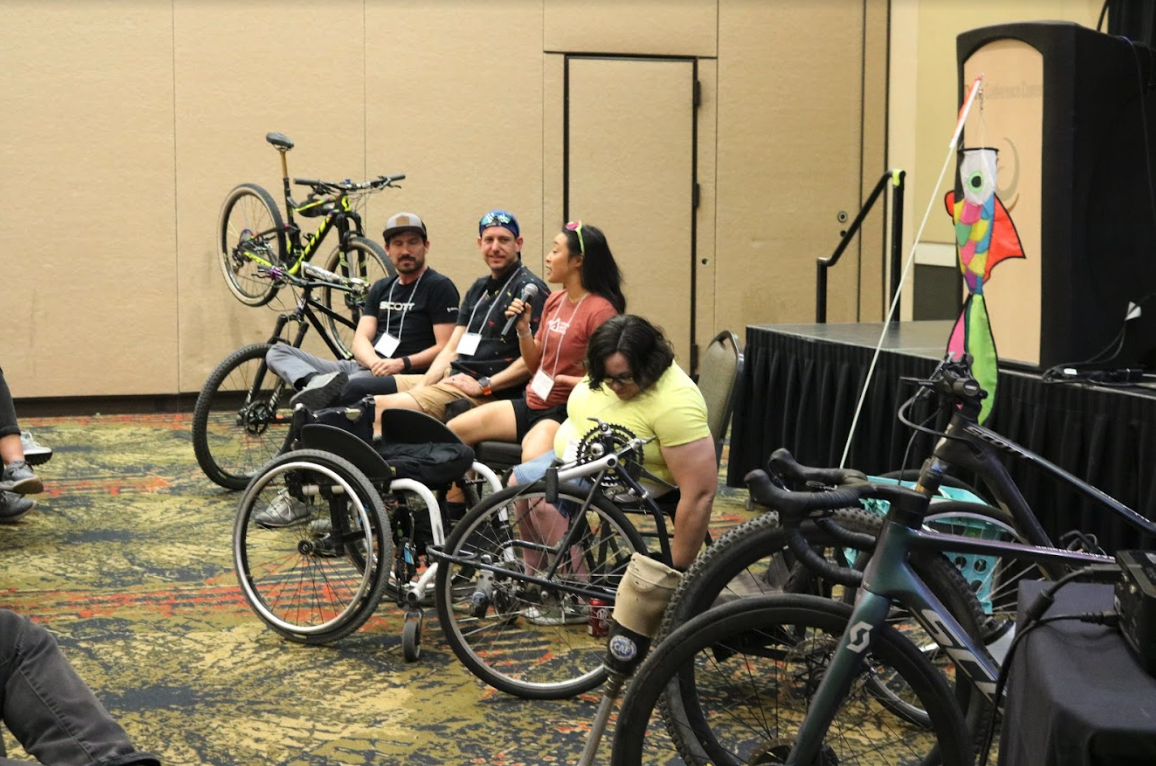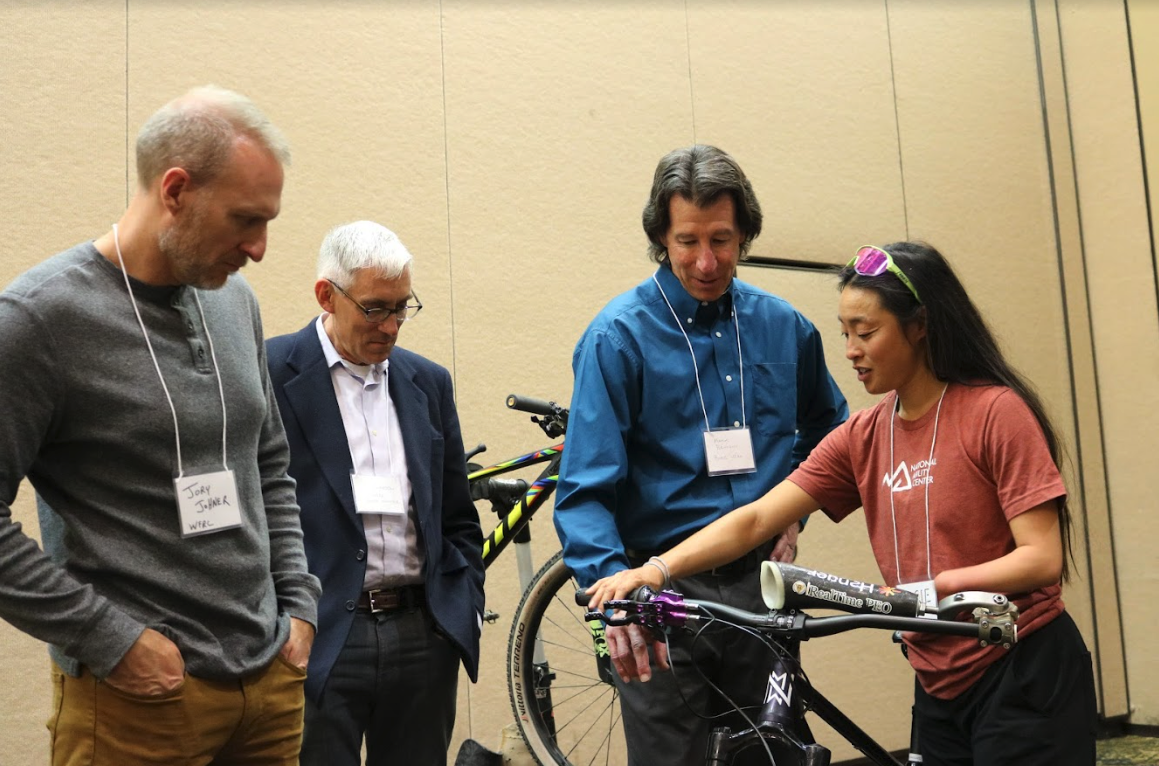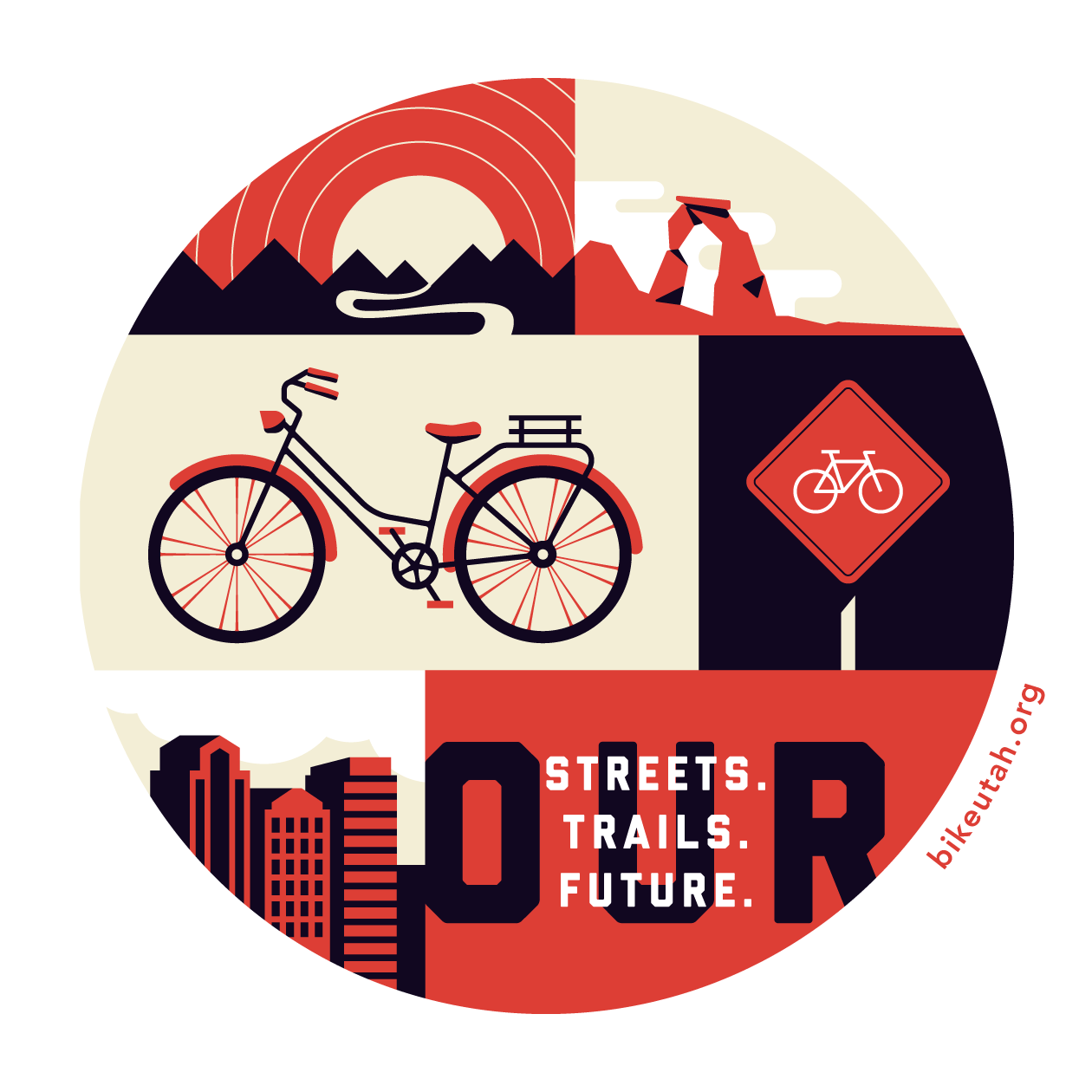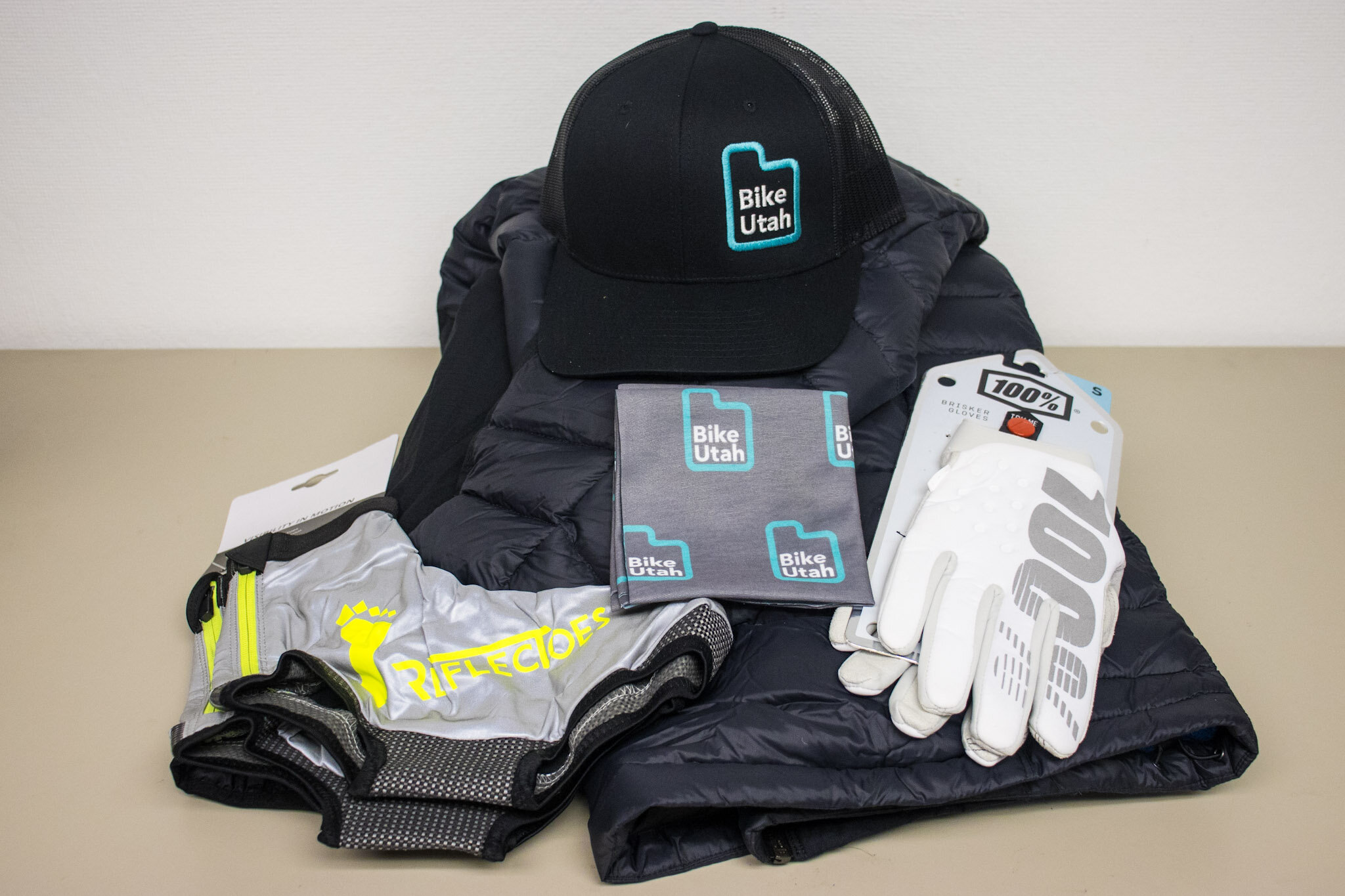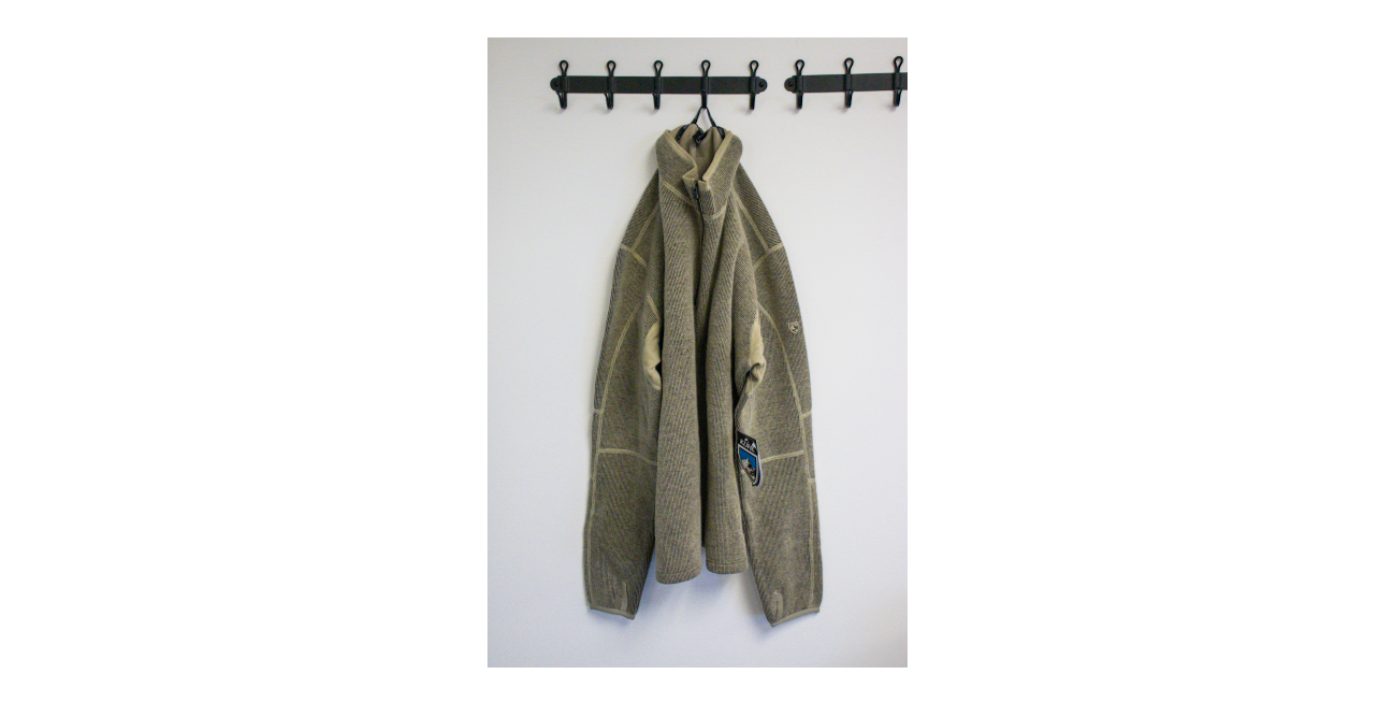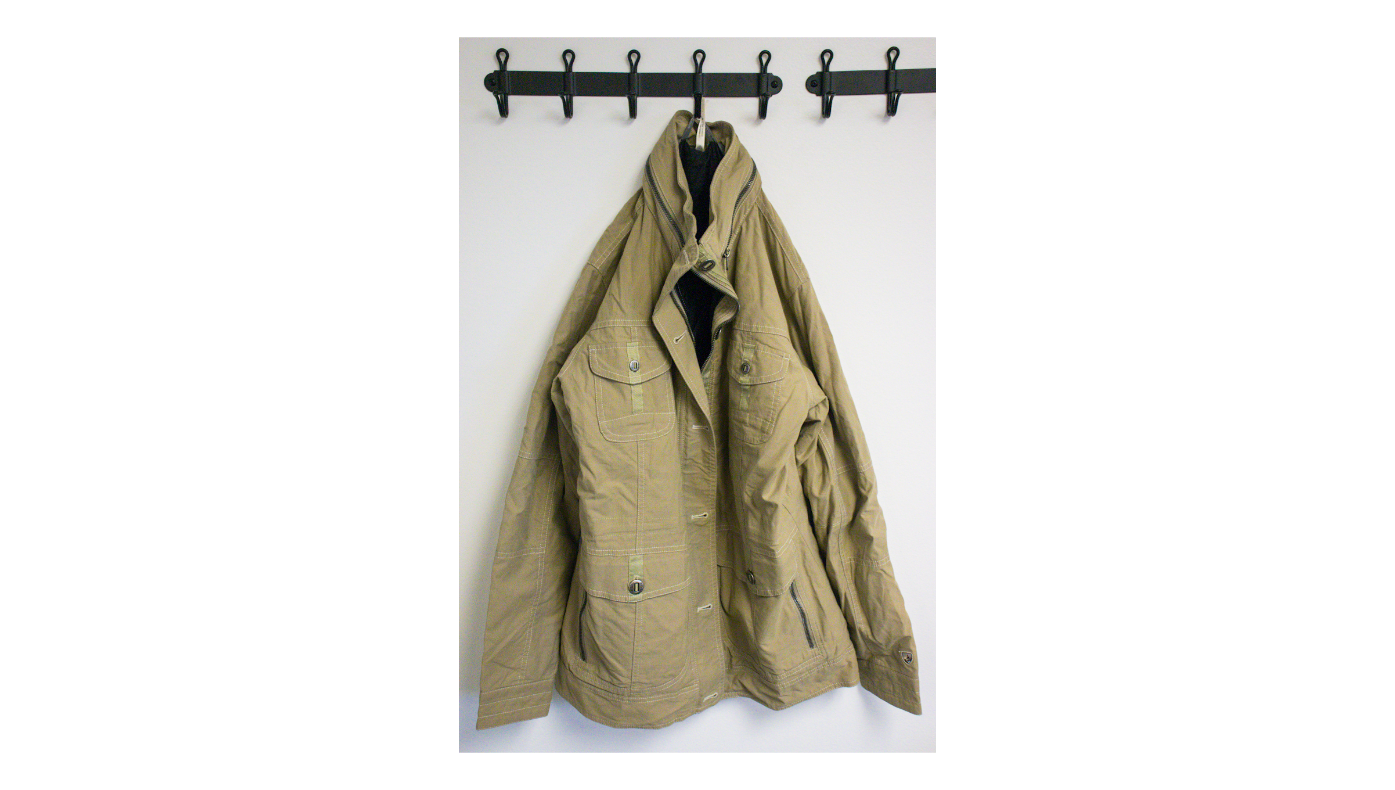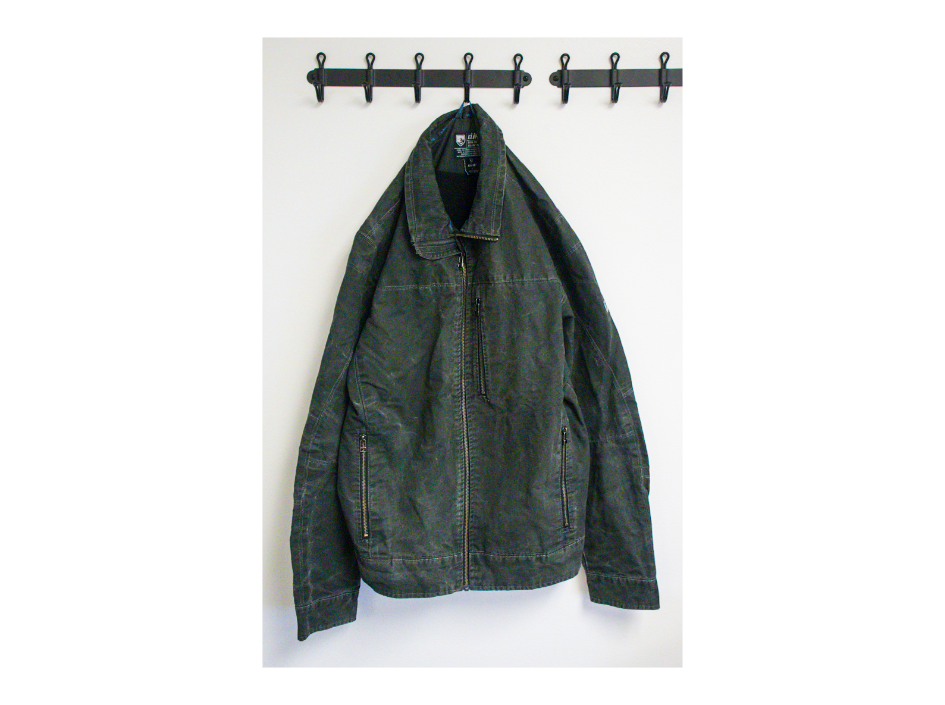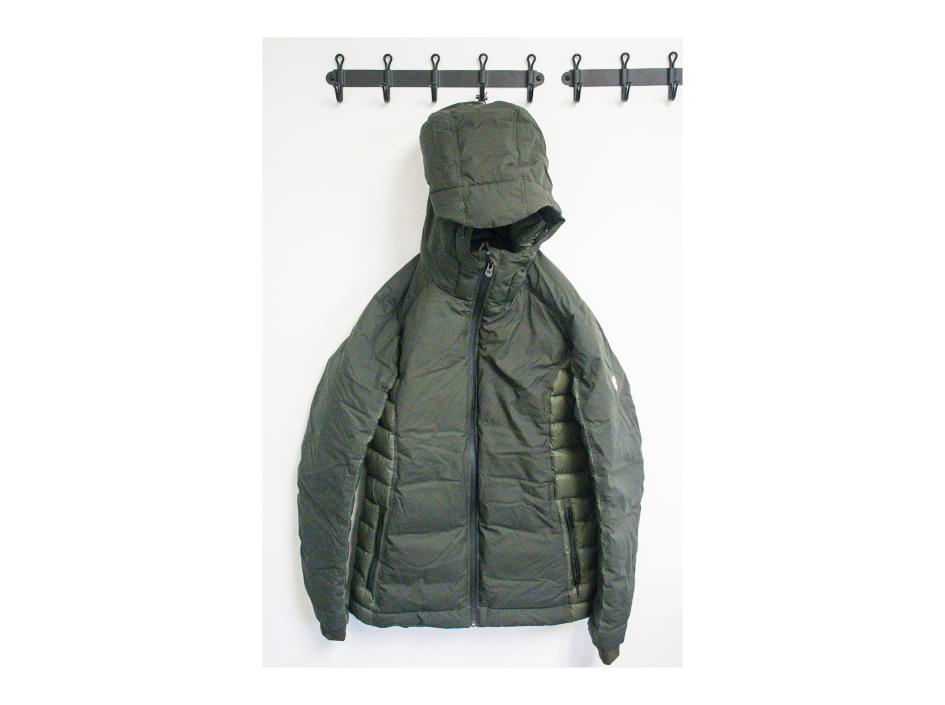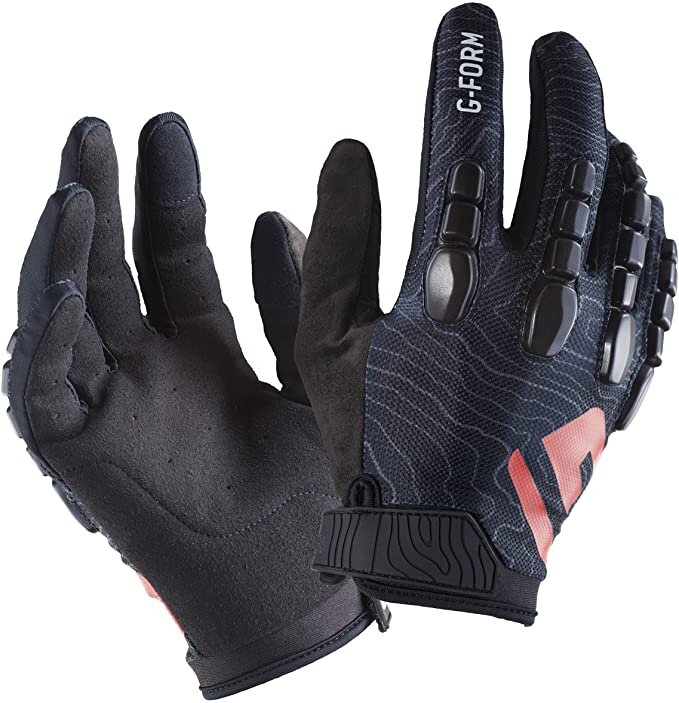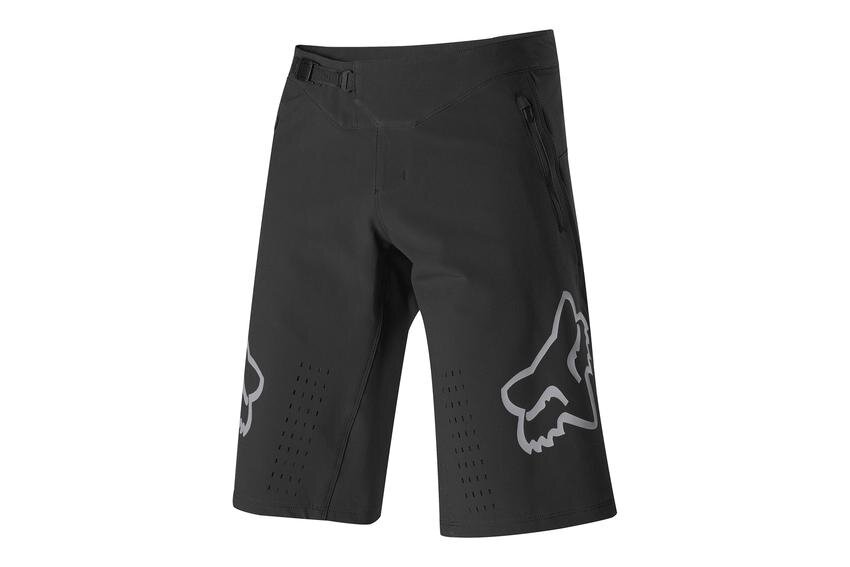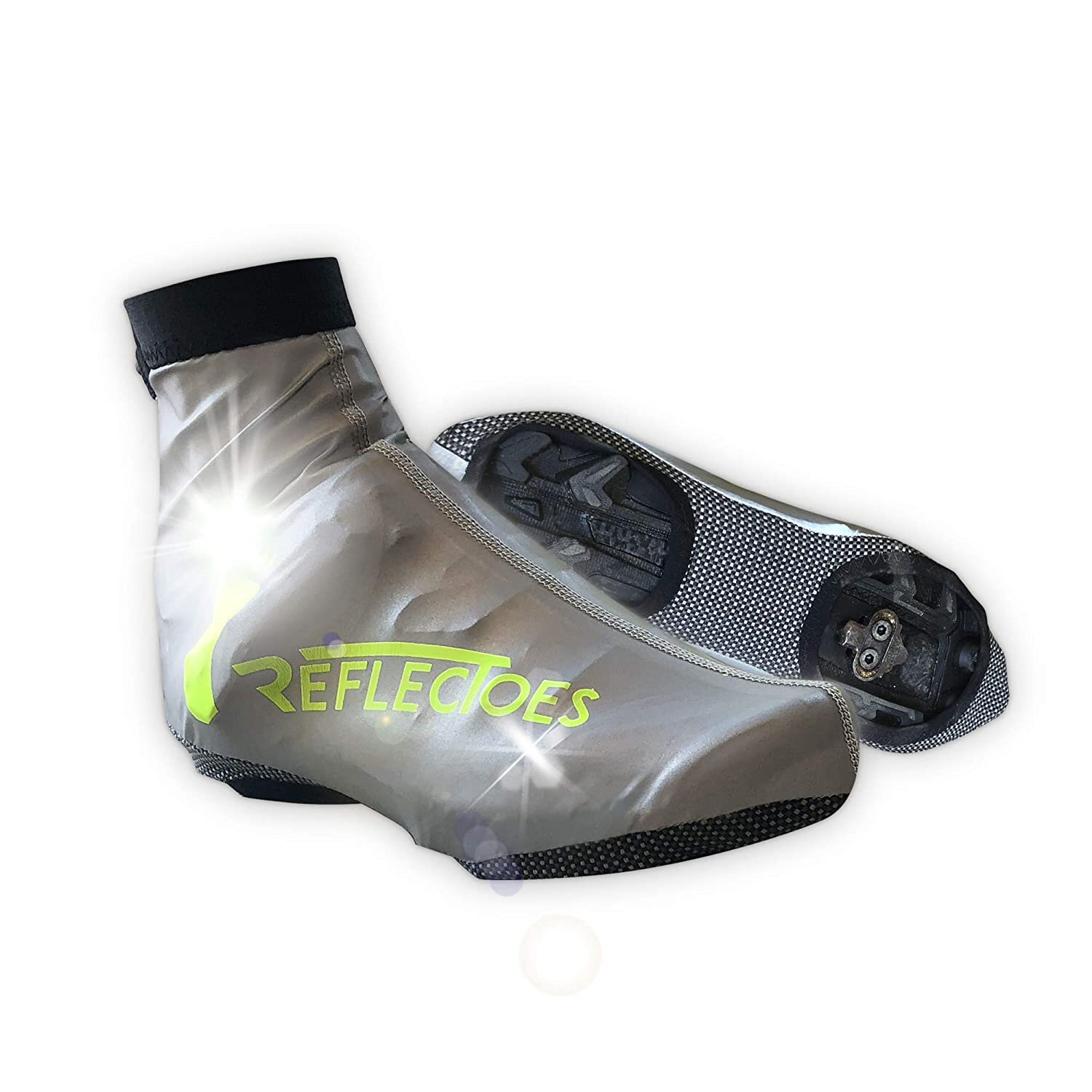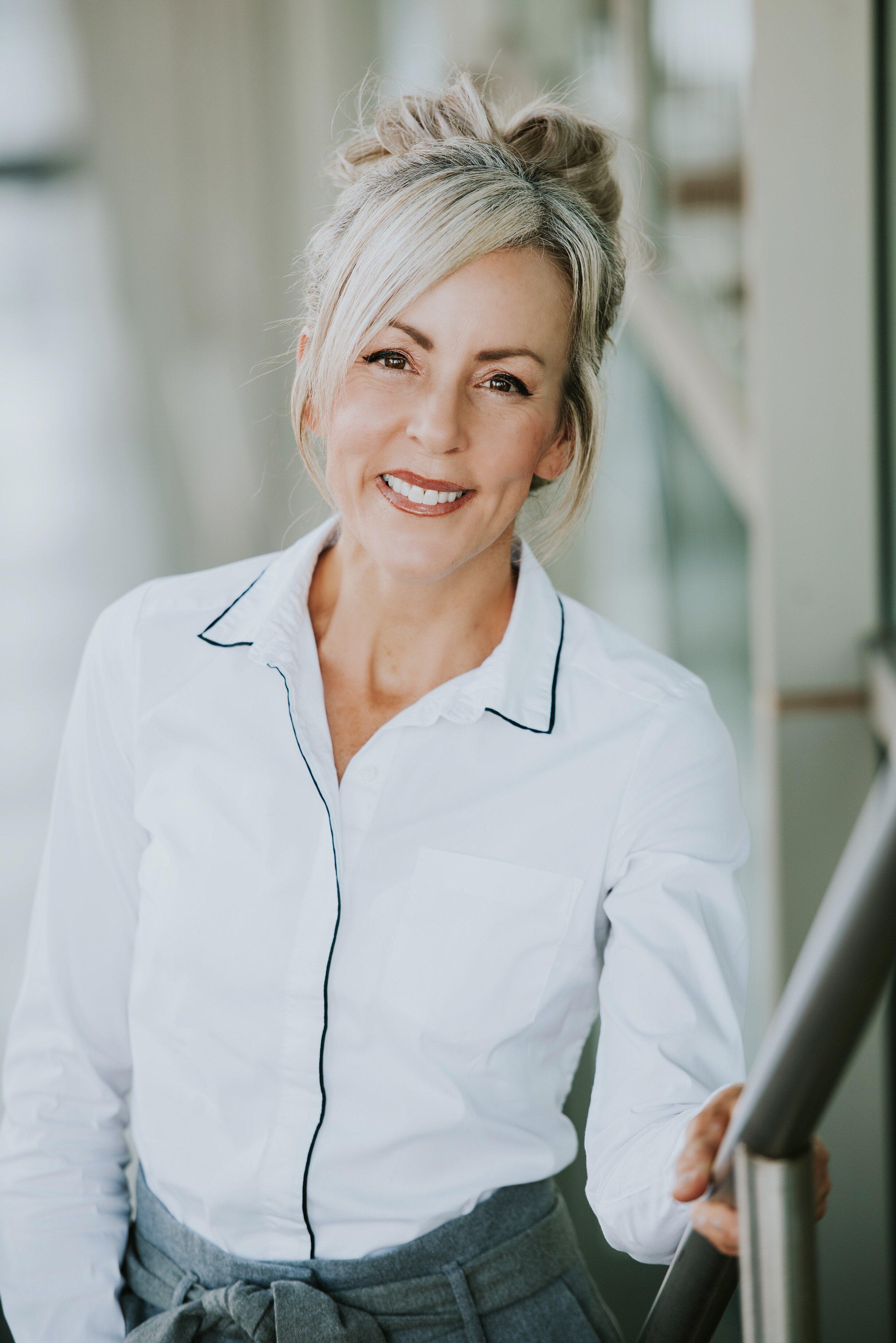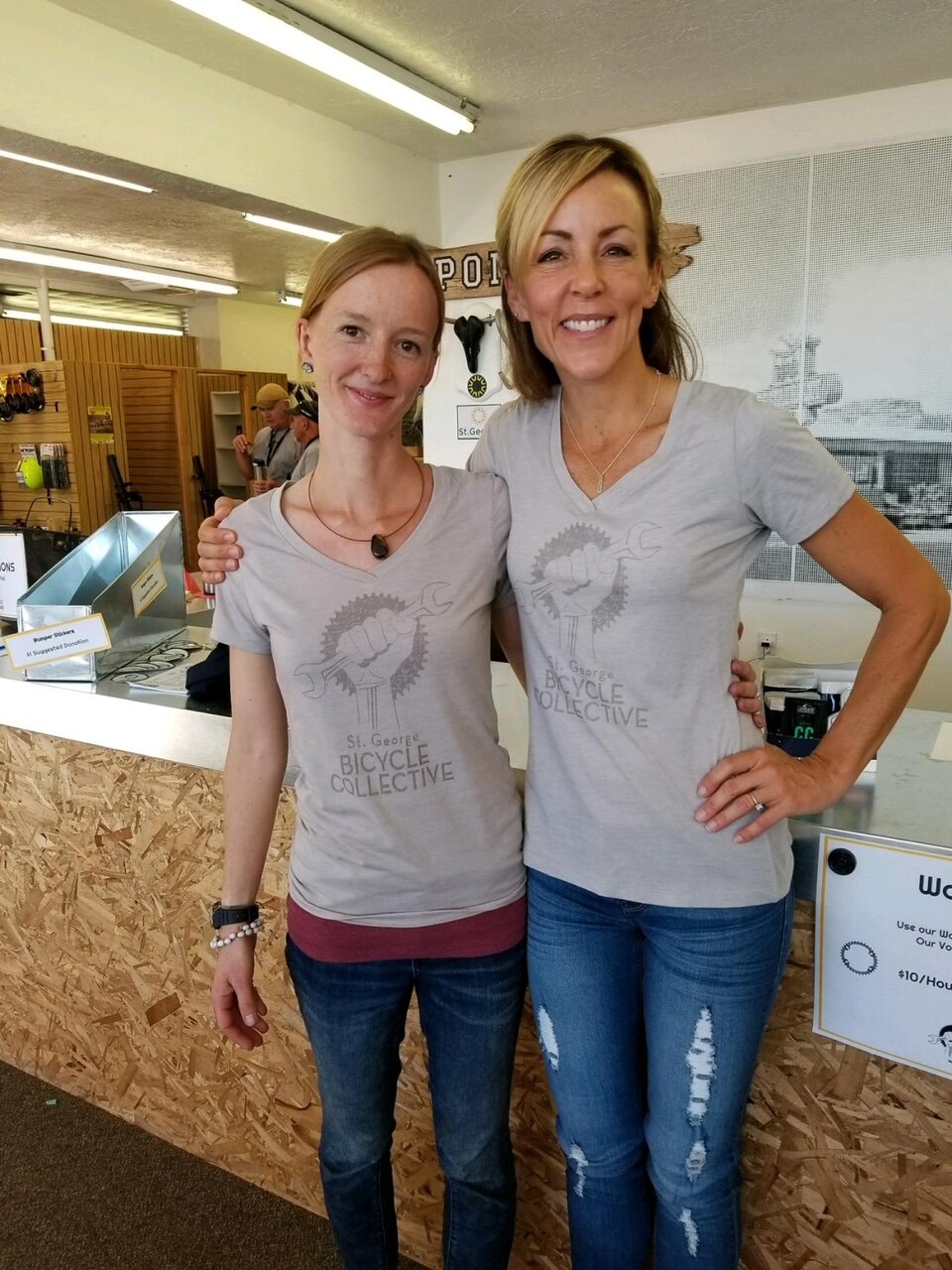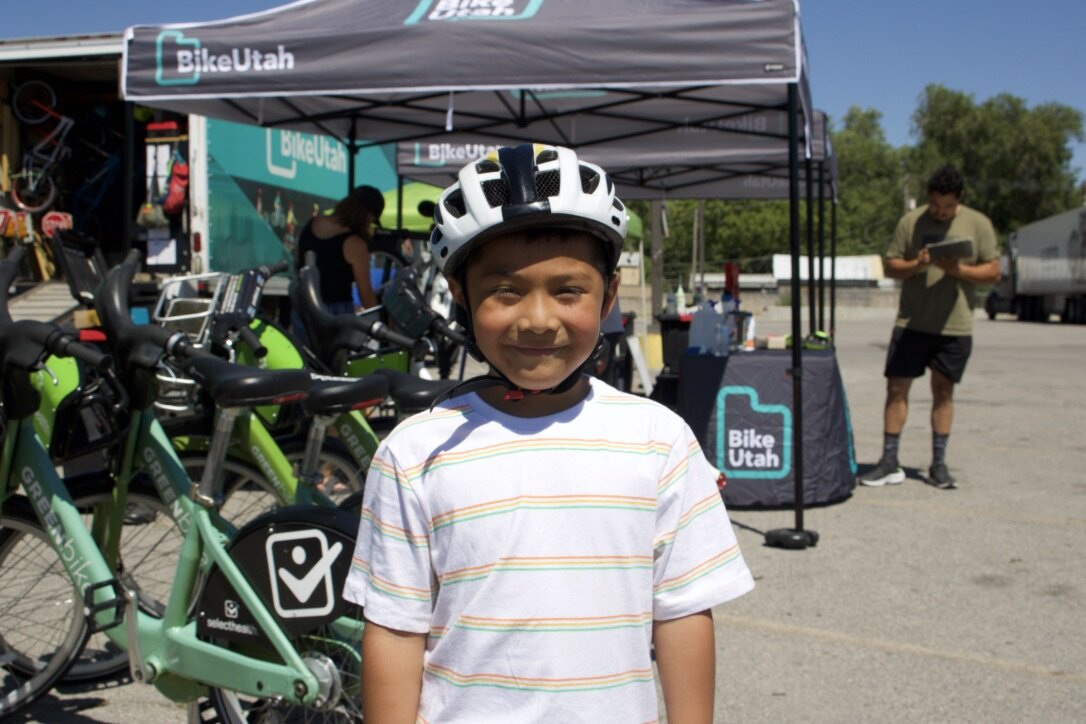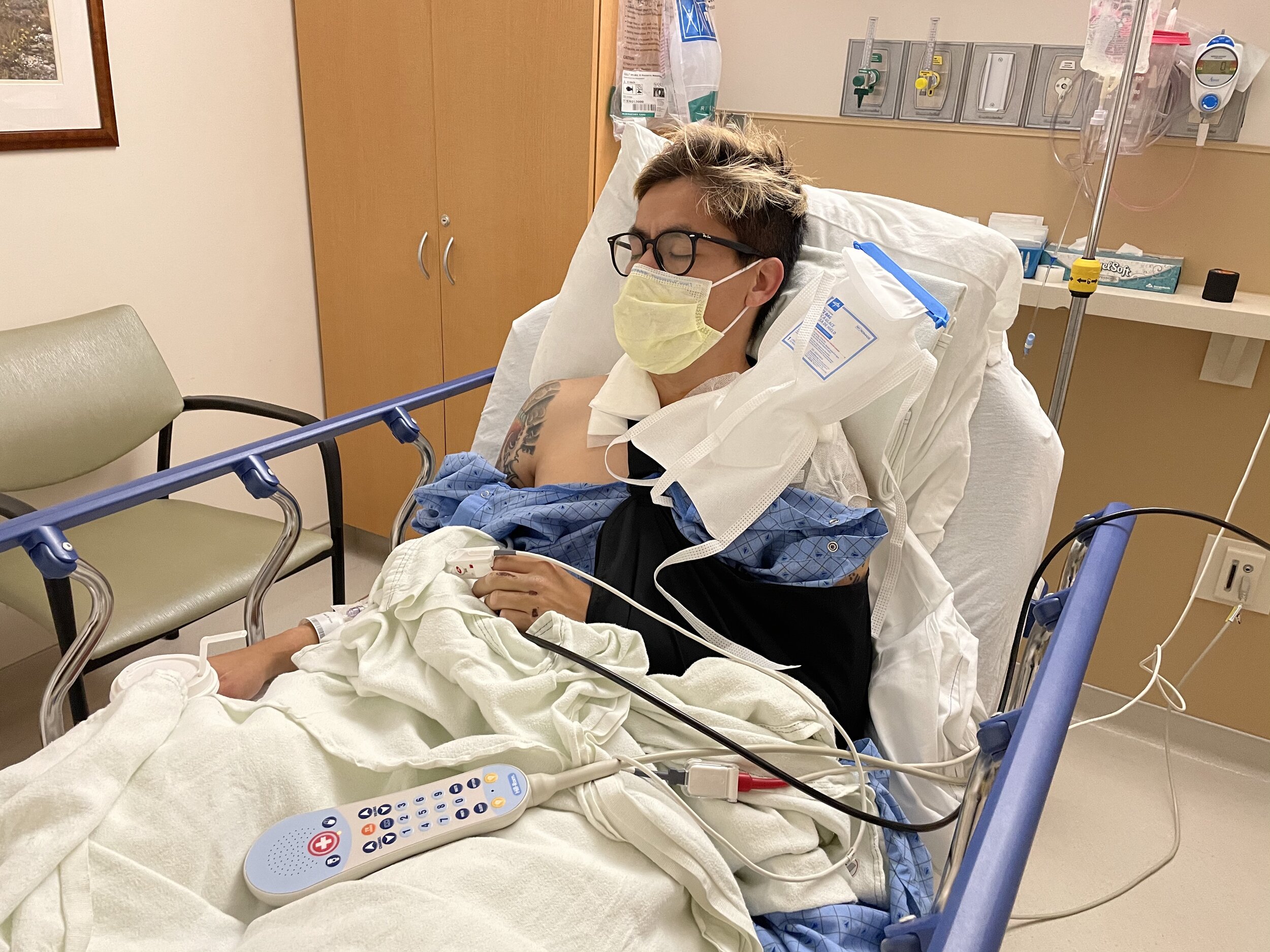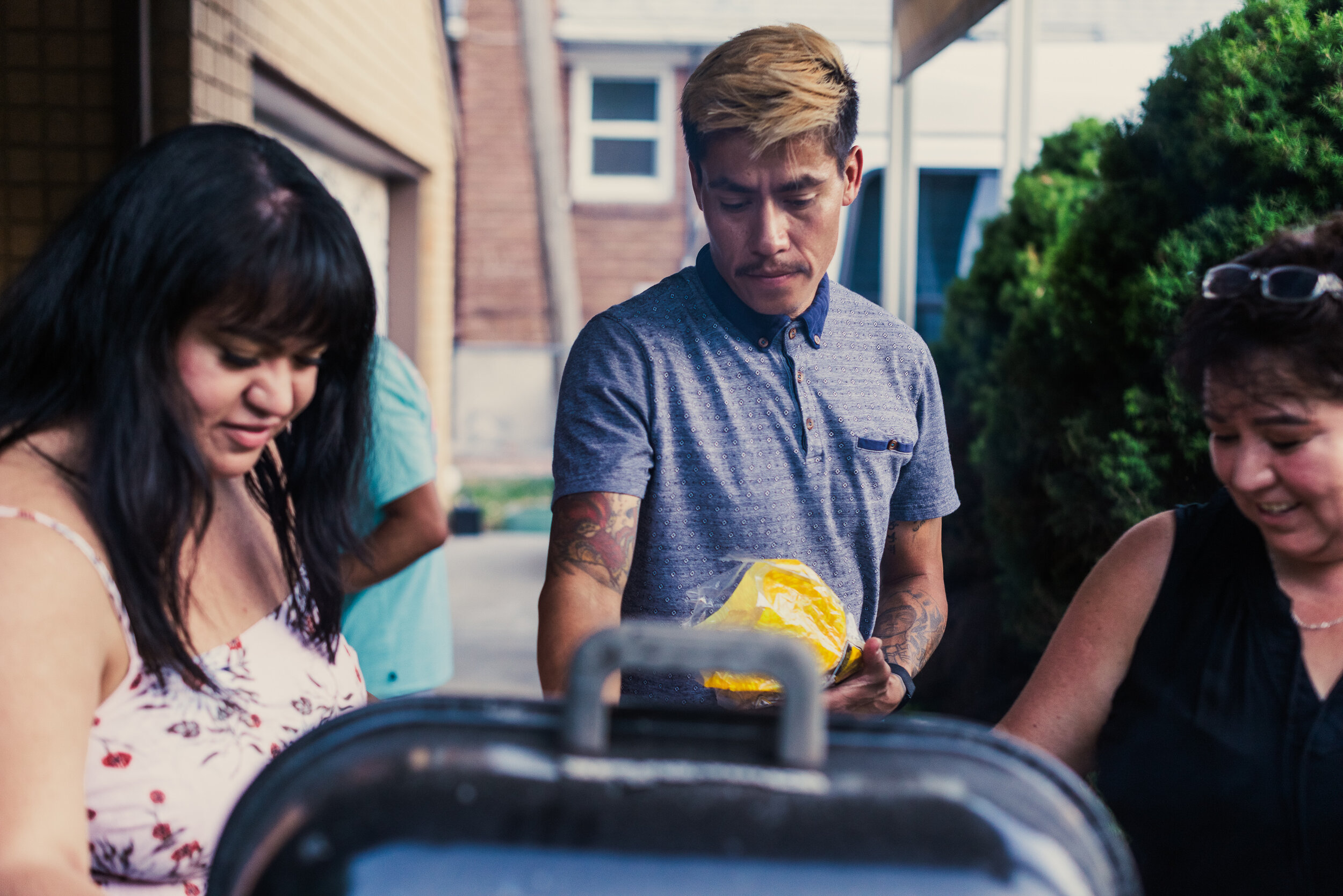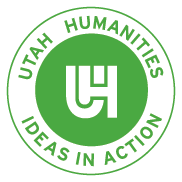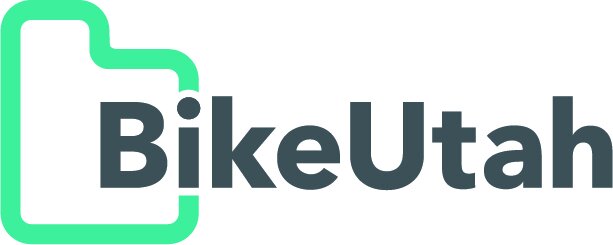
BIKE UTAH NEWS
Become a Bike Utah member
Your membership helps Bike Utah build a healthy and safe community for you, your family, and the people served through our programs.
Your membership donation of any amount is appreciated and helps ensure that Bike Utah’s programs continue to make communities safer and air cleaner through cycling. Thank you for your support to make Utah a better place to ride!
As a member, you will receive:
Our special Bike Utah sticker designed by Bike Utah volunteer Blair Adams to celebrate safe cycling across all of Utah
Our e-newsletter to keep you up to date on the latest gatherings and projects in safe cycling across Utah
With a membership donation of $100 or more, you’ll receive the sticker and a special end-of-year gift.
What does your membership support? At Bike Utah we:
Educate over 3,000 youth about cycling safety at public schools around the state each year;
Add hundreds of miles of family-friendly bicycle paths, trails, and facilities in Utah each year as part of the Governor’s 1,000 Miles Campaign;
Host community bike fix days for underrepresented communities;
Serve over 1,000 riders through our Mid Week Mountain Bike Race Series;
Host workshops to build safer streets and a more inclusive cycling community through the Utah Bike Summit;
Provide a Bike Mechanical Education and Training Program through eight weeks of core mechanical training and cycling education to youth in secure custody, supporting their vocational skills, health, and wellness, and promoting their employment opportunities in the cycling industry and community upon release from JJS custody
Align policy priorities in the General Legislative Session that support health and safety
THANK YOU FOR HELPING BIKE UTAH build a better community through cycling!
Bike Lanes Meet Green Infrastructure
While we are moving towards safer bike infrastructure, why not make it green?
Better Bike Lanes There have been great strides made in creating safer and better bike infrastructure in Utah. To do this we are creating more lanes with physical separation between the cars and riders, rather than the standard painted white lanes on the road that are commonplace. As detailed below in the Bikeway Design image, best practices in bicycle friendly roadway design are centered around creating context sensitive facilities that increase in intensity as vehicle numbers and speeds increase. In urban environments, this often means creating barriers between car and cyclist that we can take advantage of to incorporate green infrastructure concepts.
What is green infrastructure?
It's a broad term that generally means building practices which incorporate ecosystem services. These are the cost effective and health-supportive services our ecosystems provide us with like clean air and water. In urban environments these natural ecosystem services can be lost. The cleaning and cycling of our water is impeded by the extensive amounts of concrete and other types of paved areas. In less built environments most of the ground surface is composed of permeable surfaces such as soil. When it rains the water is able to seep into this porous ground providing nearby plants with the water necessary to carry out their basic functions, or eventually returns back to groundwater supplies. During this process the plants, soil and rocks naturally cleans the water. Some of the water used by plants is then released back into the air through evapotranspiration, cooling the ground level temperature.
When these natural processes aren’t able to happen due to the widespread use of impermeable surfaces in these built environments, the water runs off into storm drains, streams, or rivers. As it flows over the concrete pollutants are picked up from the ground including fertilizers used in lawns, toxins from the road, and salts used during the winter. When this water drains into rivers and streams this increase of input impedes the natural hydrology of the stream creating a system which is referred to as ‘flashy’, this erodes the sides of the banks, eventually incising the stream. This pollutes the water, erodes away important riparian zones, and ultimately reduces the biotic richness. This process is called urban stream syndrome and has become a huge issue associated with rivers and streams within urban environments.
“...landscapes with parking lots, roads, and rooftops, dramatically change this water balance. Much less precipitation is absorbed into the soil, and much more flows across the land, gathering oils, pesticides, animal waste, and trash along the way.” - ( EPA, Green Infrastructure in Arid and Semi-arid Climates )
How does this all come together?
Not only does storm water degrade our rivers, but the treatment of stormwater collected from storm drains is a costly operation, which could be done for free by the natural processes if we were to break up some of this concrete island we have built. Protected bike lanes give us a great way to do this in the barriers that shield the biker from the cars as well as helping with traffic speed and volume management. By utilizing bioswales, trees, small strips of mulch, rocks, rain gardens and drought resistant plants as the barrier we can create more areas of porous ground where rain can infiltrate.. Other benefits of this include combating heat islands, air purification, increased habitat connectivity, supporting pollinators, and creating a more aesthetically pleasing environment for pedestrians. These more ‘attractive’ and safer lanes will encourage their use and subsequently bring Utah into a greener, safer, and smarter future.
“Bicycle boulevards present an opportunity to integrate stormwater treatment facilities, street trees, and public gathering spaces with traffic speed and volume management treatments. By incorporating greenstreet elements roadway runoff is slowly attenuated onsite, water quality is improved, paving is reduced, and habitat connectivity is improved.” -( NACTO, Urban BikeWay Design Guide )
There are many great pros to building, and incorporating bike infrastructure into our cities such as; decongesting busy streets, creating a healthier and happier society, and reducing carbon emissions released during transportation. An easy way we can add to this laundry list of positive impacts is to help green our cities by breaking apart some of this concrete jungle we have built. Not only does this take a step to restore our hydrological cycle, but it creates a city which encourages us to choose other modes of transportation, that don't just prioritize the car… So why not build green?
Bike Utah helps celebrate Children's Day at the Leonardo
Children’s Day or Día Del Niño is a national holiday and huge celebration in Mexico. Children are made to feel special at this annual event, with fun activities planned by teachers, parents, and the community. The Mexican Consulate and Artes de México en Utah were co-organizers for a celebration at the Leonardo museum in downtown Salt Lake City. There was music, a chance to paint alebrijes, and good fun overall for the 200 registered guests. Bike Utah set up an area for children to tap into their creative side and decorate bicycles!
Bike Utah provided three of our “retired” bikes from our mobile fleet used to teach cycling safety to youth around the state. Local arts and crafts stores, Clever Octopus and Blick Art Materials, generously provided support via their grant programs so supplies could be purchased. We were excited to see what the children would design and use with paint, pens, ribbons, fabric, and other items available for use. The children came in waves and were excited to get dirty, literally, with paint overwhelmingly being the most popular way to decorate the bikes.
Bike Utah loved being involved in an event that highlights the joy and importance of our younger generation, and also serves as an opportunity to discuss ways to protect and prolong their health. Coincidentally the first week of May followed Children’s Day, which happened to be both the start of National Bike Month and the Mexican Consulate’s Physical Activity and Sports Promotion week. Greg Sanchez (Bike Utah Board Member) and Vince Lok (Level Pedals Program Director) joined María Ruiz (Community Affairs, Mexican Consulate) in a Facebook Live to share the importance of cycling and health, resources for newer riders, and how Bike Utah programs play a supportive role. The U.S Census Bureau indicates that 14.4% of Utah residents identify as Hispanic or Latino, which is the largest minority group in the state. We look forward to better understanding how to support cycling ridership as a form of transportation and exercise among this population through our efforts within the Level Pedals program.
As the last of the paint dried up on the bikes and the streamers came down from our tent, the children had beautifully expressed themselves in different ways. One bike adorned with an arrangement of flowers traveled back with the Wasatch Latino Coalition to be displayed at the local school, another bike showered in multiple, bright colors remained at the Leonardo, and the final bike will continue to be worked on by a local piñatera – we can’t wait to see what Clara will do!
2022 Utah Bike Summit Wrap Up
Thank you to all of you who participated in the 2022 Utah Bike Summit on April 19th!
The Utah Bike Summit is the state bicycle conference. Summit attendees are directly involved in cycling, planning and development, tourism, outdoor recreation, local business and bike shops, corporate brands, and healthcare. The theme for the 2022 Utah Bike Summit was Our Streets, Our Trails, Our Future.
2022 Session topics included:
Building Cities to Support Dignity, Justice, and Well-Being
Layton Mobile Active Transportation Tour
Advancing Cycling Policy in Utah
Forward Design: Forms of Commuting - All Ability
Business Economy: Open Streets
UDOT Public Input: Design, Findings, and Regional Workshops
Riding is for Everyone!
Cycling Tourism and Its Impact to Rural Communities
Rise of the First and Last Mile in Utah
Universal Infrastructure Design
Bike Utah Responds to the Death of Cyclists in Southern Utah
Media release, 4/10/22:
Bike Utah Responds to the Death of Cyclists in Southern Utah
Salt Lake City, UT–This weekend two brothers were killed on Telegraph Street in southern Utah, despite the fact that they were legally traveling in a dedicated bike lane as participants in the annual Spring Tour of St. George.
“We are gutted by the tragic and preventable death of the two cyclists whose lives were taken this weekend by someone who admittedly drove under the influence. Our hearts go out to their loved ones and to everyone who witnessed the crash, as well as to those who attempted to provide life-saving help,” said Bike Utah Executive Director Jenn Oxborrow. “Bike lanes exist to promote safe, active transportation, allowing vehicles and bicycles to travel simultaneously in different lanes on the same roadway. As we witnessed on Friday, and on numerous other occasions, when drivers are impaired no one is safe.”
According to data from the National Highway Safety Transportation Association, 846 pedalcyclists died in 2019 and alcohol was involved in 34 percent of the fatal pedalcyclist crashes. Nearly 50,000 pedalcyclists are injured by motor vehicle drivers each year. More information can be found here: crashstats.nhtsa.dot.gov/Api/Public/ViewPublication/813197.
Per Zero Fatalities, 29 percent of Utah road fatalities involve people who are not in a vehicle. That equates to nearly 100 bicyclists, motorcyclists, and pedestrians killed annually on Utah roads: one preventable death every three–four days each year. Utah Department of Health data indicates motor vehicle traffic crashes (MVTC) as one of the main injury causes of death, accounting for 231 deaths in Utah during 2019 with a spike in MVTCs in 2020.
Bike Utah’s commitment to making Utah a better place to ride is renewed by the homicides this weekend. We encourage all Utahns to join advocacy efforts focused on safe and equitable travel, statewide, and remind everyone to not drive while under the influence.
###
Become a Bike Utah member in the 2022 Bike Month member drive!
Whether you cycle once a year or every day, a Bike Utah membership gives you unique benefits while supporting the trails and streets in Utah that you love. Become a member by donating to Bike Utah! All members receive our newsletter, invitations to Bike Utah events, and other special gifts.
Receive the Bike Utah Member sticker when you donate to Bike Utah this year!
When you become a Bike Utah Member in 2022 by making any size of donation, we're excited to offer a Bike Utah sticker designed by volunteer Blair Adams to celebrate safe cycling across all of Utah. With a membership donation of $100 or more, you’ll receive the sticker and a special end-of-year gift.
A gift of any size is appreciated and helps ensure that Bike Utah’s programs continue to make communities safer and air cleaner through cycling.
What does a Bike Utah membership support?
Educating over 3,000 youth about cycling safety at schools around the state since April 2021
Recording 665 miles of family-friendly bicycle paths, trails, and facilities in Utah since the start of the Governor’s 1,000 Miles Campaign
Serving over 9,000 racers at the Mid Week MTB series in the last 4 years
Bike Month Bingo!
Celebrate Bike Month by participating in Salt Lake County Health Department’s Bike Month bingo!
Email completed forms and bingo cards to Mercedes Maestas at mmaestas@slco.org by May 31, 2022 to be entered to win helmets, bike locks, bike lights, and more!
Celebrate Bike Month with Bike Utah!
May is National Bike Month! Established in 1956, Bike Month is an opportunity to showcase the many benefits of cycling and encourage more people to give it a try.
You’re invited to celebrate Bike Month with us and our partners! Visit our Bike Month landing page for a list of events happening throughout the state that you can join during the month of May. The list will be updated as we get closer to May. Email info@bikeutah.org to add your event to the list!
Whether you’re an avid cyclist or just starting out, Bike Month is a great time to support cycling in your community. Here’s how:
Get outside and cycle
Support your local bike shop
Clean up a trail
Advocate for cycling-friendly infrastructure
Volunteer at a Mid Week MTB Race
Attend the Spoke Series on May 11th at The Front Climbing Gym Downtown
Attend a number of events that partner organizations are doing across the state
Support Bike Utah by becoming a Bike Utah Member
Bike Utah is making Utah a better place to ride during Bike Month and all year long. Email us at info@bikeutah.org and let us know what you’re doing to make Utah a better place to ride. Thank you for the support, and keep pedaling!
Announcing Bike Utah's New Executive Director
Jenn Oxborrow Shifts Gears as Bike Utah’s New Executive Director
Salt Lake City— Bike Utah is pleased to announce Jenn Oxborrow as their new executive director. Oxborrow brings more than 20 years of experience serving Utah communities, and advocating for equitable and accessible health and wellness for all.
“We are truly excited to have Jenn join us. We hope to leverage her experience and enthusiasm to continue to grow Bike Utah and our programs into the future,” said Bike Utah Board Chair Steph Tomlin.
Known by many for her work specific to victims and survivors, Oxborrow is ‘shifting gears’ to focus her expertise on making Utah a better place to ride, advocating for livable, healthy communities, and reducing barriers to ride, such as age, ability, race, or income.
“Biking became an essential part of my life to rebuild strength, stay connected to Utah’s trails and communities, and to spend time with my family exploring this beautiful state,” states Jenn Oxborrow, executive director of Bike Utah. “Bikes have brought empowerment, connection, health, and wellness to my life in countless ways. I intend to do all I can to ensure everyone in Utah can ride.”
Oxborrow joins Bike Utah at a time of extraordinarily high use of paths and trails across the state, for both recreation and commuter purposes, by people of varying riding experience levels and abilities. She looks forward to addressing these trends and other priorities, as well as connecting and collaborating with others to fulfill Bike Utah’s mission and vision.
###
About: Bike Utah is a statewide non-profit organization advocating for and supporting bicycling and other active transportation. We envision a Utah where complete networks of bike lanes, paths, and trails contribute to livable, healthy communities, allowing everyone to ride regardless of age, ability, or income. Bike Utah collaborates with all levels of government, organizations, agencies, businesses, and the general public to develop active transportation plans, educate thousands of children and adults, increase safety through legislation, and improve quality of life for residents and visitors with more bike lanes, paths, and trails.
Jenn encourages partners, supporters, and community members to contact Jenn anytime at jenn@bikeutah.org
Join our Mid Week Ambassador Program!
Mid Week MTB Series Ambassador program
Thank you for your interest in the Bike Utah Mid Week MTB Series Ambassador program! The Mid Week MTB Series Ambassador program is new in 2022, and one that will give you the opportunity to represent the series at various Mid Week races and Bike Utah events.
As a Mid Week MTB Series Ambassador, you’ll receive full race sponsorship for the 2022 Mid Week MTB Series, features on our website and social media, along with some cool swag! You don’t have to be a seasoned pro; previous race experience at Mid Week MTB Series or any other race series is NOT required. We are looking for people who are stoked about bikes at every ability level and want to share the Mid Week community with others.
We encourage the following community members to apply:
Families
Women
BIPOC Community
Youth
New Competitors
Adaptive Cyclists
Hand Cyclists
Applications can be submitted until January 14, 2022. The Mid Week team will review applications during the week of January 17, and we will follow up with you then. We look forward to seeing why you would like to represent the Mid Week MTB Series!
What is the Mid Week MTB Series?
The mission of the Mid Week MTB Series is to provide a consistently fun and challenging community mountain bike racing experience for riders of all ages and ability levels at venues throughout the Wasatch Front, Wasatch Back, and Salt Lake and Utah Valleys. Proceeds from the Mid Week MTB Series benefit Bike Utah programs.
A Visit Recap of San Juan County
Bike Utah’s 1,000 Miles Campaign Director and Intern, Chris Wiltsie and Bjorn Nichelson, recently completed a ride from Blanding to Monument Valley to meet with advocates about the potential of creating a bicycle-friendly facility.
Meeting with community advocates such as Jim Hook of Recapture Lodge and Molly Schmidt of Design Build Bluff and riding the region’s conditions, helped the 1,000 Miles Campaign gain a better understanding of how to serve the San Juan community.
“Firsthand experience will always lead to better planning outcomes. We wanted to know what people were experiencing as they walked and biked through their communities. We will now be using these experiences to inform a planning effort throughout San Juan County.” -Chris Wiltsie, 1,000 Miles Campaign Director
San Juan County is situated in the southeast region of Utah, with a landmass of about 7,725 square miles and home to recreational hotspots such as national and state parks, monuments, and outdoor resources.
With outdoor recreation creating an attractive quality of life; San Juan County reported a population of about 15,356 people in 2017 and a growth rate of 7.6 percent. The growing communities along the route would benefit from multi-use paths throughout their neighborhoods and main streets. The current infrastructure requires residents to walk/ride on dirt paths, on rough less than ideal terrain. Creating friendly paths would allow for improved neighborhood connectivity and continue to strengthen the community atmosphere that makes San Juan County one of a kind.
Do you have any follow-up questions about this ride? Would you like to learn more about the 1,000 Miles Campaign? Would you like to invite the 1,000 Miles Campaign to learn more about your community? Send an email to chris@bikeutah.org.
Roll Forward with Bike Utah!
Roll Forward into 2022
2021 has been a journey for all of us! We’re looking forward to continuing our work to make bicycling safer and more accessible in 2022 through continuing education, advocacy, and improved infrastructure with your support.
What your dollars do:
Educating more than 12,700 kids since 2016 through our Youth Bicycle Education and Safety Training (BEST) Program.
Recording 644 total miles of family-friendly bike lanes, paths, and trails through the Governor's 1,000 Miles Campaign.
Educating advocates for better bicycling conditions and infrastructure in communities statewide.
Working to pass laws that make bicycling in Utah safer and more accessible.
Join us now in making Utah a better place to ride and receive special thank you gifts and a chance to win exciting prizes!
Gifts:
Get a pair of Bike Utah socks when you donate $100 or more! AND make your gift a recurring donation and receive a Bike Utah buff!
And, when you make a donation, be entered to win one of our two prize giveaway packages and individual items:
Package One
Details: Bike Utah hat, Bike Utah buff, Kuhl men’s coat (L), Reflectoes shoe covers (L), Brisker gloves (L)
Package Two
Details: Bike Utah hat, Bike Utah buff, Kuhl women’s coat (S), Reflectoes shoe covers (L), Kula cloth, Brisker gloves (M)
Individual Items
Donate $20 or more and be entered to win additional gear!
Details: Kuhl clothing, Clean Simple Eats protein powder, Goal Zero solar lantern, Elite thermal knee warmers, G-Form trail gloves, Fox riding shorts, Reflectoes shoe covers. Thank you to Kuhl, Clean Simple Eats, Goal Zero, Elite, G-Form, Fox, and Reflectoes for your support this year!
Click on the link below to donate today to support our 2022 programming!
Advocate of the Month: Dannielle Larkin
Name: Dannielle Larkin
Pronouns: she/her
Occupation: St. George City Councilwoman, Small business owner
Associated Advocacy Group: Southern Utah Bicycle Alliance (SUBA), Past Board Member Bicycle Collective
Position at associated advocacy group(s): cofounder of the Bicycle Collective in St. George, Boardmember and Past President of the Southern Utah Bicycle Alliance
What was your first bike?
The first bike I purchased was a Giant Iguana from Bingham Cyclery in Sandy in the 1980’s. It was in the $300 range and it felt like the most colossal and worthwhile purchase of my life. I still think I valued that bike more than any other I’ve owned because it felt like such a sacrifice to spend that much money when I was making $3.25 an hour and working after school 12 hours a week.
Where is your favorite place to ride in Southern Utah? I love to ride north on the trail that parallels SR-18 from St. George to Snow Canyon. It’s a challenging 10-mile climb from my front door to the entrance to Snow Canyon, then pure bliss soaring down that canyon with its breathtaking scenery. I never tire of this ride or its scenic conclusion!
How did you build your relationships with the Southern Utah Bicycle Alliance and the Bicycle Collective?
As an avid cyclist, I saw a need in Southern Utah for access to bicycles and bicycle-related infrastructure. I was attending Southern Utah University in 2015 and needed to complete a community project. I decided to start something I called the Bike Kitchen that repaired bikes for people living at our homeless shelter and utilizing our soup kitchen. This project morphed into a relationship with the Bicycle Collective and an eventual merger. Working with the Bike Kitchen and the Bicycle Collective, I became familiar with SUBA and happily joined their board of advocates in 2018.
What makes the cycling scene in Southern Utah unique?
We have, on average, 320+ days of sunshine a year. Bicycling is almost always a viable option in Southern Utah, whether it be for transportation or recreation. Also of note is the large retirement community and now the access to e-bikes. It has been transformational in getting folks who may have never considered riding out onto our trails in large and happy numbers.
What cycling challenges do you hope to see the cycling community in Southern Utah overcome?
The idea that riding on the road is for spandex-clad enthusiasts only, riding on the dirt trails is only for the young and fast, and trail connectivity is just a luxury of those who have time to recreate. Bikes are for everyone and they can be used as a tool for fun or community connection or a healthy and inexpensive way to get where you need to go.
What future projects do you hope to see happen in your community?
A continuation of our vital trail connectivity throughout the city. As we continue to grow and expand, I want complete streets to be a ubiquitous part of every plan brought to the city.
What is the most important piece to the puzzle to make riding safer in Southern Utah?
Awareness and education. When we reach a point that the driver of the automobile watches out for the cyclist who’s watching out for the walker who’s watching out for the wheelchair who’s watching out for the curb cut…. That’s when we reach transportation nirvana I think.
What advice do you have for someone who is interested in advocacy, but has no idea where to start? Google “biking in (your city)” and start there. There are so many for-profit and not-for-profit avenues in almost every city in Utah. Test a few spaces out and see what feels like a good fit for you. Most Not-for-profits have boards and anyone can attend their board meetings. Start with something that feels fun to you and consider riding your bike to the first meeting/gathering you attend.
How do you make sure you are taking care of yourself and avoiding burnout while working?
I am an early morning appreciator so I love to spend those early hours walking or running or biking to refuel my soul.
How can we engage future generations to continue advocacy work in Southern Utah?
Teaching them about the history of the work helps. Knowing that the trail you love hasn’t always been there and that the bike you ride is far safer than those of the past and that cities have not always been auto-centric… Understanding how things have evolved helps younger generations buy into the philosophy that they are part of the continuing evolutionary process.
Do you have a follow-up question for Dannielle? Would you like more info about your local bicycling advocacy group or have a specific active transportation project you’d like to see initiated? Do you know an advocate we should highlight? Email info@bikeutah.org!
¡Vueltas Con Papá!
Making Utah a Better Place to Ride
Bike Utah envisions a Utah that is accessible to all riders regardless of age, ability, race, or income.
In accordance with our mission, we are continuously taking steps to bridge the gap between lower-income people of color and the cycling community.
With an array of barriers ranging from infrastructure to safety, this demographic typically lacks the resources and financial means to continue cycling safely. Although lower-income people of color are the largest and fastest-growing demographic in bicycling, they are often the least represented, often dubbed the “invisible cyclist." It is critical for the future of bicycle advocacy to ensure that the many faces of cycling are welcomed, included, and represented. With these pillars, we are strategically connecting with underrepresented riders in community events such as Vueltas Con Papá.

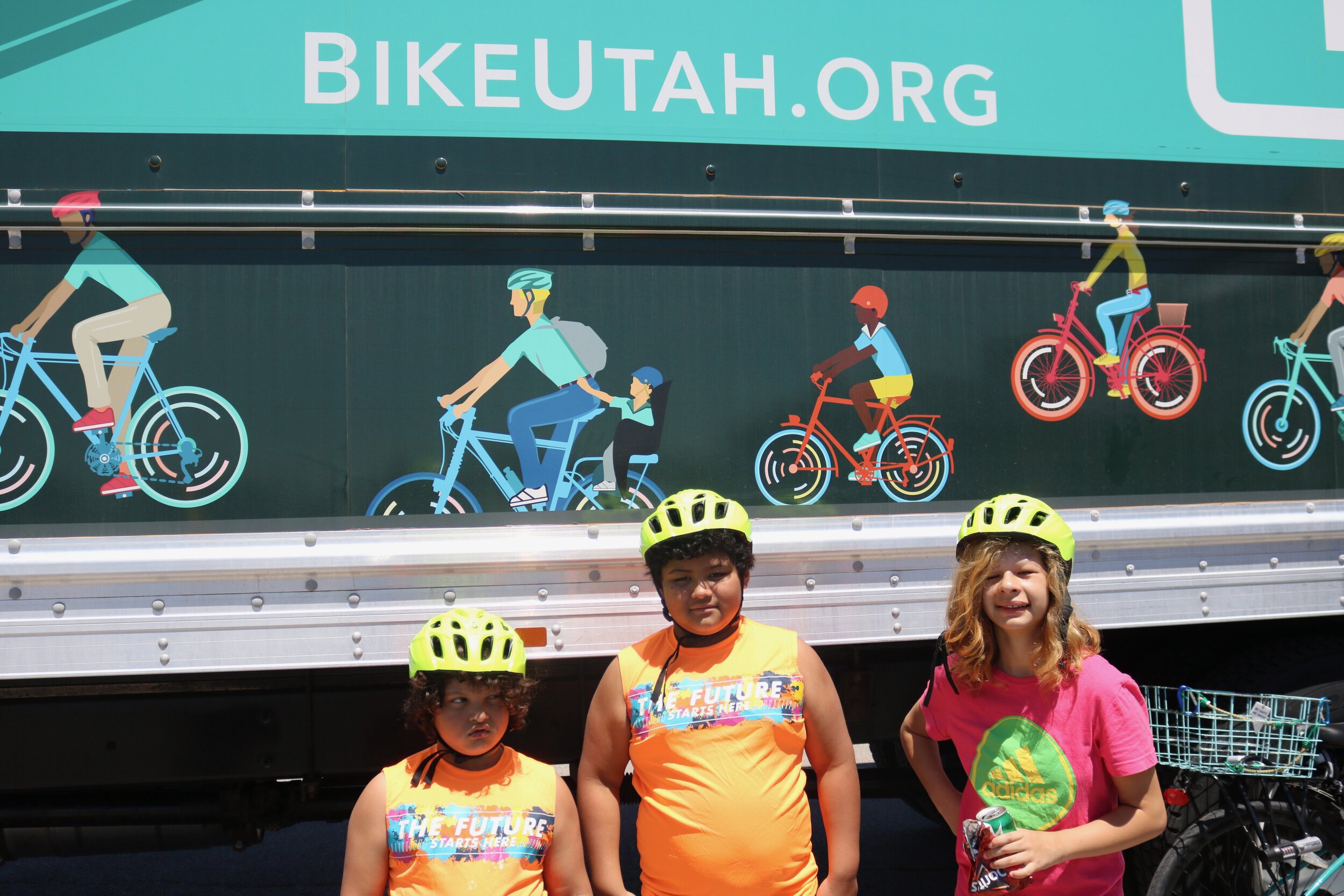
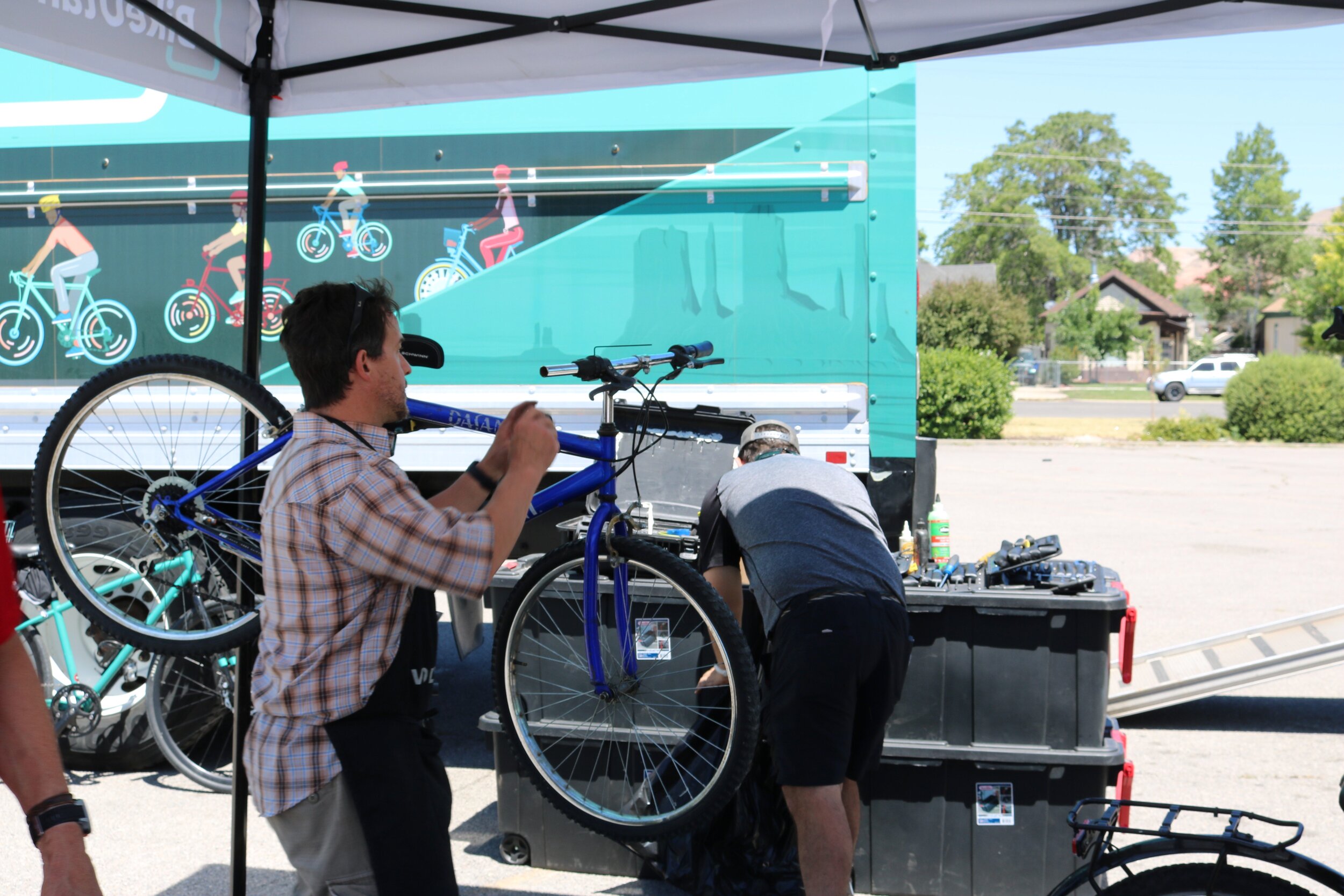
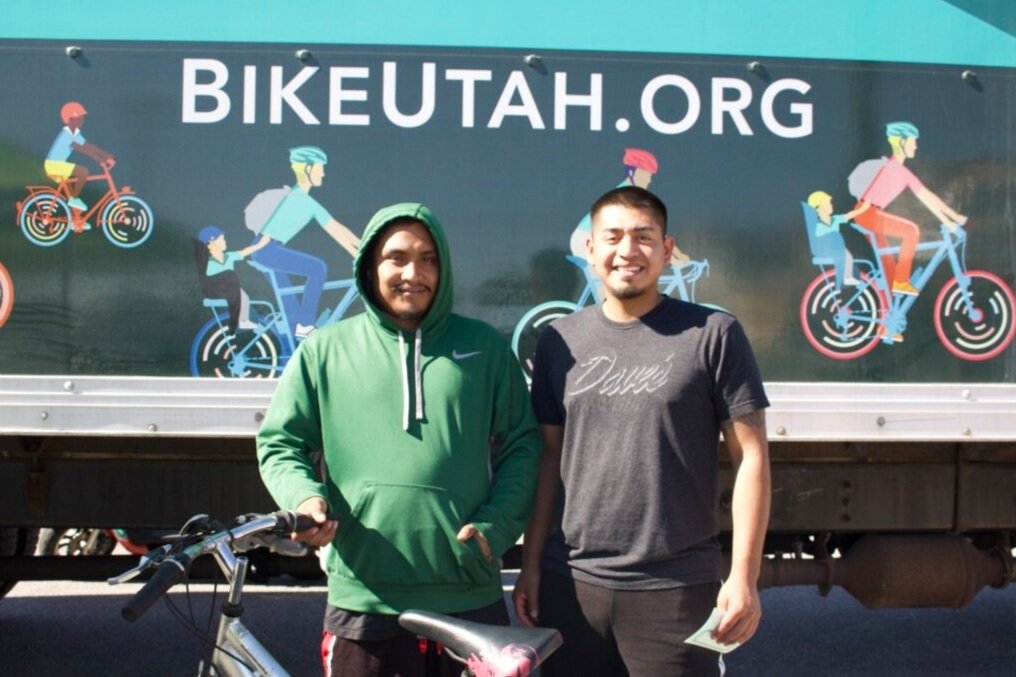
Vueltas Con Papa
On June 20th, 2021 Bike Utah hosted Vueltas Con Papá at Rancho Market (140 900 W, Salt Lake City, UT 84116). This event focused on connecting the Latino community to critical community partners, such as the Salt Lake Bicycle Collective, Green Bikes, and our very own Youth BEST Program. In an effort to create a more inclusive cycling community Vueltas Con Papá included free bike repairs, a helmet giveaway, and informational pamphlets all in Spanish for adults and children in. With the help of volunteers, bicycle mechanics, and Spanish translators, we were able to achieve the following:
Bikes Repaired: 16
4 kid bikes
12 adult bikes
Helmets gifted: 20
Visitors impact: 52 attendees
The Future of the Invisible Cyclist
With the help of our community partners, Vueltas Con Papá was a great success. As we continue to work towards a more equitable cycling future, we will continue working with lower-income people of color to improve the quality of life for all marginalized cyclists. Stay tuned for more community events!
Do you have a follow-up question? Would you like more info about cycling resources for lower-income people of color? Would you like to volunteer at a future event? Email: lulu@bikeutah.org!
Promotor de Bicicletas del Mes: Alvin Garcia
Nombre: Alvin Garcia
Pronombres: Él / él
Ocupación: Equipador - The Front Climbing Club
Grupos Asociados de Promoción de Bicicletas: Uso mi rol de embajador regional de Gnarly Nutrition para promover a las minorías, los inmigrantes y una nutrición más saludable para todos. Mi deporte y pasatiempo principal es el ciclismo. También compito por el club de salud Ascent Cycling p/b como un ciclista aficionado, también principalmente uso el club y la marca para construir amistades y comunidad.
¿Cuál fue tu primera bicicleta?
Mi primera bicicleta fue un BMX Pacific rojo y plateado. Este es un recuerdo muy especial, ya que fue el primer regalo de festivo que mi madre pudo permitirse y me lo dio poco después de que emigramos y nos establecimos en los Estados Unidos.
¿Qué relación tuviste con las bicicletas cuando eras niño?
Cuando era niño, fui testigo de cómo mi familia se sentía excluida debido a nuestra condición de indocumentados, la barrera del idioma y el cambio cultural en los estados. Afortunadamente, a través de las bicicletas, mis hermanos y yo encontramos amor y refugio en el Zuni Bike Club en Tucson, Arizona. A través del club aprendimos a limpiar, afinar y construir bicicletas. Estas bicicletas luego se vendieron en el swapmeet o se donarán a cualquier persona que las necesitara. Todas las ganancias se destinarán al mantenimiento de un jardín comunitario, el garaje que usamos y al mantenimiento de suministros y herramientas en stock. El club también realizaría un seguimiento de las horas dedicadas a trabajar y, más tarde, permitiría intercambiar hojas de trabajo por nuevas piezas de bicicleta y tiempo de taller personal para trabajar en sus propias bicicletas.
¿Cómo moldeó el Zuni Bike Club su relación con las bicicletas como adulto?
Estos primeros recuerdos me han ayudado más allá de lo que podía imaginar cuando era niño. El tiempo dedicado a las herramientas, los suministros y la resolución de problemas mecánicos me ha permitido desarrollar el respeto por el trabajo duro, sentirme cómodo y mantener la mente clara en situaciones difíciles. Lo más importante, como adulto, reconozco que el deseo de servir o encontrar formas de ayudar a la comunidad inmigrante proviene del amor y la fe que recibo en el Zuni Bike Club.
¿Cuál es su tipo de bicicleta preferido y cómo se sintió cómodo con él?
Me encantan todos los tipos de ciclismo. El ciclismo de carretera me permite sentirme competitivo e ir rápido. El ciclismo de montaña me mantiene cerca de la naturaleza, con los pies en la tierra y mi entrenador de interior me mantiene humilde. Pulsar un pedal puede tener la misma mecánica, no todos los pilotos son iguales, por lo que simplemente no podía escoger uno como mi favorito. Puedo decir que andar en bicicleta al principio puede ser extremadamente intimidante, cuanto más salgas y sientas el poder que tienes, más fácil y cómodo te sentirás con tu entorno.
¿Cómo te ha ayudado el ciclismo a fomentar un sentido de comunidad?
El ciclismo me acogió cuando más lo necesitaba cuando era niño y también me ha traído de vuelta y me ha hecho sentir amado cuando me siento perdido o confundido. En el último año, me choqué con mi bicicleta de carretera, fui atropellado por un automóvil mientras andaba en mi bicicleta, y en una ocasión diferente, tuve que trabajar para recuperarme de muchas cirugías. A pesar de todo esto, he tenido la suerte de tener amigos y extraños de la comunidad ciclista que se acercaron para ayudar y ofrecer más de lo que podría esperar. No estaría donde estoy sin el amor y el apoyo de mi comunidad.
¿Cuál es tu lugar favorito para montar en Utah?
Una decisión muy difícil de hacer ya que Utah tiene muchos caminos y senderos hermosos. Si es necesario, Emigration Canyon es mi destino diario. A veces montó ese cañón dos o tres veces al día. Sirve como la cantidad perfecta de millas para descomprimir, hacer ejercicio o para presentar a un nuevo ciclista la belleza de escalar montañas en bicicleta. También es un cañón muy popular donde puedes encontrarte y trabajar para sentirte más cómodo en la carretera. También fui involucrado en mi primer accidente ciclista en este cañón, por lo que es natural que respete y tenga esta carretera cerca de mi corazón.
¿Cuál fue su viaje para volver al ciclismo después de ser atropellado por un automóvil?
El camino de regreso al ciclismo ha sido difícil por decir lo menos. Solo han pasado cuatro meses desde la última cirugía, los huesos rotos, el reemplazo de una placa de clavícula y un pulmón dañado me han hecho retroceder meses de entrenamiento, con muchas facturas médicas y, a veces, me siento deprimido o mentalmente agotado. Afortunadamente y muy agradecido por ello, no he tenido que enfrentar esto solo. La esperanza y el impulso para mejorar se han visto fuertemente influenciados por el amor y el apoyo que he recibido de mi familia, amigos y comunidades. Así que el viaje para recuperarme continúa y solo puedo esperar que las cosas mejoren.
¿Cómo ha influido el hecho de ser inmigrante en tu relación con el ciclismo?
Ser inmigrante siempre me ha dejado con un poco de resentido. Como inmigrantes, aunque no debería ser así, tenemos que trabajar más duro que la mayoría para sentirnos nivelados o encontrar aceptación. Esta actitud me ha mantenido comprometido con el ciclismo a la hora de competir. Pienso en todo el trabajo duro que mi madre y mi familia han hecho para verme feliz y disparar por las estrellas. Al mismo tiempo, muy importante, el ciclismo me permite sentirme humano y me recuerda que, sin importar tu origen, a todos nos duele lo mismo cuando salimos y pedaleamos. Esto me ayuda a mantenerme humilde y agradecido por mis bendiciones y experiencias.
¿Cómo influye tu identidad Latinx en tu relación con el ciclismo?
Creo que como miembros de la comunidad Latinx tenemos dos responsabilidades principales: una es lograr, construir y soñar mas allá de las oportunidades que nuestros padres y raíces buscaron fuera de nuestra tierra natal. La segunda responsabilidad es compartir el amor, transmitir la lealtad y la cultura increíblemente hermosa de la que venimos.
Todavía no es normal ver a nuestra gente paseando en bicicleta por los cañones y las carreteras. Entonces, con eso en mente, hago todo lo posible por representar mis colores con orgullo, amor y respeto. Estas dos responsabilidades también me permiten mantener un corazón abierto hacia la diversidad y durante los momentos difíciles mientras conduzco. De otra manera positiva, estas responsabilidades también me mantienen hambriento y buscando formas de mostrar a mis comunidades latinas e inmigrantes que hay espacio para nosotros. Es fácil decir que he estado usando mi relación con el ciclismo para ejercer estas responsabilidades.
¿Qué es algo que le gustaría que la comunidad ciclista pudiera practicar para crear una comunidad más segura para los inmigrantes?
Ojalá la comunidad ciclista invirtiera un poco más en la creación de clubes y lugares seguros como el Zuni Bike Club para jóvenes inmigrantes. Estos tipos de espacios seguros permiten que los niños experimenten y desarrollen el respeto por el trabajo mientras se mantienen fuera de las calles.
Como adultos, montando bicicletas en la carretera, creo que la comunidad ciclista puede trabajar para no ser tan profesional. Saluda, sonríe y habla entre ellos. Todos compartimos y andamos en bicicleta porque nos hace sentir humanos. Es hora de acabar con la vieja cultura elitista que nos dice que tenemos que vernos, vestirse o actuar de cierta manera para encajar. Todos podemos, simplemente, trabajar para que todos se sientan bienvenidos y amados.
¿Qué consejo le darías a la comunidad de inmigrantes/Latinx interesados en el ciclismo?
No puedo aconsejar mucho porque todavía estoy trabajando para resolverlo por mí mismo, creo sinceramente que nosotros, como inmigrantes y miembros de la comunidad Latinx, tenemos mucho espacio y potencial en el mundo del ciclismo. Dejemos que el ejemplo de trabajo duro de nuestros padres y el amor latino que llevamos nos lleve a un futuro diferente y mejor. La comunidad ciclista podría usar más representación de inmigrantes y con nuestro deseo de superar o acortar la distancia entre los grupos raciales, creo que podemos encontrar mucho apoyo y éxito en el arte de empujar los pedales. Pedalea fuerte y con amor por ti mismo y por los demás.
¿Qué esperas ver en el futuro de la comunidad ciclista?
Mi única esperanza es que todos, ciclistas o no, se sientan cómodos en las bicicletas o alrededor de ellas. Este deporte es una herramienta que todos podemos utilizar para eliminar barreras, fomentar el respeto y el amor mutuo. El ciclismo ha brindado y continúa brindando las oportunidades perfectas para conectarse y ser mi verdadero yo con cualquier persona con la que tenga la oportunidad de pedalear.
¿Tiene una pregunta de seguimiento para Alvin? ¿Le gustaría obtener más información sobre su grupo local de promoción de bicicletas o tener un proyecto de transporte activo específico que le gustaría ver iniciado? ¿Conoce algún promotor de bicicletas que debamos entrevistar? ¡Envíe un correo electrónico a info@bikeutah.org!
Advocate of the Month: Alvin Garcia
Name: Alvin Garcia
Pronouns: He/Him/His
Occupation: Route Setter at The Front Climbing Club
Associated Advocacy Group: I use my Gnarly Nutrition Regional Ambassadors role to advocate for minorities, immigrants and to promote healthier nutrition for all. I also compete for Ascent Cycling p/b Health club as an amateur road racer but primarily use the club and brand to build friendships and community.
What was your first bike?
My very first bike was a red and silver Pacific BMX jumper. This is a very special memory as It was the very first holiday present my mother was able to afford and gave me shortly after we migrated and settled in the States.
What relationship did you have with bicycles as a child?
As a young child, I witnessed how my family would often feel left out because of our undocumented status, language barrier, and the culture change in the states. Luckily through bicycles, my siblings and I found love and refuge at the Zuni Bike Club in Tucson, Arizona. Through the club, we learned to clean, tune and build bicycles really well. These bikes would then be sold at the swapmeet or donated to anyone in need of a bike. All earnings would go towards maintaining a community garden, the garage we used, and keeping supplies and tools in stock. The club would also keep track of the hours spent working and later on let us trade in worksheets for new bike parts and personal shop time to work on our own bikes.
What were the lasting effects of relationships like the Zuni Bike Club?
These early memories have helped me beyond what I could imagine as a child. The hands-on time spent with tools, supplies, and troubleshooting mechanical issues has allowed me to build respect for hard work, feel comfortable and keep a clear mind throughout difficult situations. Most importantly, as an adult, I recognize that the desire to serve or find ways to help the immigrant community comes from the love and belief I receive at the Zuni Bike Club.
What is your preferred type of riding and how did you get comfortable with it?
I love all types of riding. Road cycling allows me to feel competitive and go fast. Mountain biking keeps me close to nature, grounded and my indoor trainer breaks me down and keeps me humble. Pushing a pedal may have the same mechanics but all riding isn’t the same and so I simply couldn't just pick one as my favorite. I can say, riding a bike at first can be extremely intimidating but the more you get out and sense the power you hold, the easier and the more comfortable you become with your surroundings.
How has cycling helped you foster a sense of community?
Cycling welcomed me when I most needed it as a child and it has also brought me back and made me feel loved when feeling lost or confused. In this past year, I've personally crashed on my road bike, been hit by a car while riding my bike on a different occasion, and have had to work on recovering from many surgeries. Despite this all, I've been blessed to have friends and strangers from the cycling community reach out to help and offer more than I could ever expect. I wouldn’t be where I am without my community's love and support.
Where is your favorite place to ride in Utah?
A very tough choice to make since Utah has so many beautiful roads and trails. But, If I must, Emigration Canyon is my daily go-to. I sometimes ride that canyon twice or three times a day. Serves as the perfect amount of miles to decompress, exercise, or introduce a new rider to the beauty of climbing mountains on a bike. It’s also a very popular canyon where you can meet and work on feeling more comfortable on the road. I also experienced my first cycling crash in this canyon, so it's only natural that I respect and hold this road close to my heart.
What was your journey to returning to cycling after being hit by a car?
The path back to cycling has been difficult, to say the least. It’s only been four months since the last surgery but, broken bones, a collarbone plate replacement, and a damaged lung has set me back months of training, with many medical bills and sometimes feeling depressed or mentally drained. Luckily and extremely grateful for it, I haven’t had to face this alone. Hope and drive to get better have been heavily influenced by the love and support I’ve received from my family, friends, and communities. So the journey to recovery continues and I can only expect things to get better.
How has being an immigrant influenced your relationship with cycling?
Being an immigrant has always left me to walk with a chip on my shoulder. As immigrants, although it shouldn't be this way, we often have to work harder than most to feel leveled or find acceptance. This attitude has kept me engaged with cycling when it comes to competing. I think of all the hard work my mother and family have put in in order to see me happy and shooting for the stars. At the same time, very importantly, cycling allows me to feel human and reminds me that, no matter our background, we all hurt the same when going out and pedaling. This helps me keep humble and grateful for my blessings and experiences.
How does your Latinx identity integrate into your relationship with cycling?
I believe that as members of the Latinx community we have two major responsibilities: One is to accomplish, build on, and dream beyond the opportunities our parents and roots sought outside of our homelands. The second responsibility is to share the love, pass on the loyalty and amazingly beautiful culture we come from. It isn’t yet normal to see our people out riding in the canyons and roads. So with that in mind, I try my best to represent my colors with pride, love, and respect. These two responsibilities also allow me to keep an open heart towards diversity and during difficult moments while I ride. In another positive way, these responsibilities also keep me hungry and out looking for ways to show my Latinx and immigrant communities that there is room for us. It's easy to say I’ve been using my relationship with cycling to exercise these responsibilities.
What is something you wish the cycling community could practice creating a safer community for immigrants?
I wish the cycling community would invest a little more in building clubs and safe places like the Zuni Bike Club for young immigrants. These types of safe spaces allow for children to experience and grow respect for labor while keeping off the streets.
As adults, riding out on the road, I think the cycling community can work on not being so professional. Wave, smile, and talk to each other. We all share and ride bikes because it makes us feel human. It's time to break down the old elitist culture that tells us we have to look, dress or act a certain way in order to fit in. We can all, simply, work on making everyone feel welcomed and loved.
What advice do you have for immigrants/Latinx communities who are interested in cycling?
I can’t advise much as I’m still working to figure that out myself but, I sincerely believe that we as immigrants and members of the Latinx community have so much room and potential in the cycling world. Let our parent’s example of hard work and the thick Latin love we carry drive us into a different but better future. The cycling community could use more immigrant representation and with our desire to overcome or shorten the distance between racial groups, I believe, we can find a lot of support and success within the art of pushing the pedals. Pedal hard but with love for yourself and others.
What do you hope to see in the future from the cycling community?
My only hope is for everyone, rider or not, to feel comfortable on or around bikes. This sport is a tool we can all use to remove barriers, build respect and love for one another. Cycling has and continues to provide the perfect opportunities to connect and be my true self around anyone I have the opportunity to pedal with.
Do you have a follow-up question for Alvin? Would you like more info about your local bicycling advocacy group or have a specific active transportation project you’d like to see initiated? Do you know an advocate we should highlight? Email info@bikeutah.org!
All Bodies on Bikes with Kailey Kornhauser Spoke Series
Four months after starring in Shimano’s film “All Bodies on Bikes“, cyclist Kailey Kornhauser continues to advance the cycling space in her message that cycling is for everyone. UofU graduate Kailey started cycling because she couldn’t afford a car. “Then, I thought, in the back of my head, ‘If I do this, I’ll lose weight and look like all the other cyclists.’ But that was not my reality.”
Join us for a conversation with Kailey Kornhauser over zoom on September 23, 2021 at 7pm MST - you’ll learn about how to find joy in cycling, set the tone, and build an all-body inclusive space within your place of work, study, play and life.
This Spoke Series is in partnership with Kailey Kornhauser, Bike Utah, University of Utah Sustainability Office, and Utah Humanities Book Festival. Kailey will build from the language and lessons in the book, “What We Don't Talk About When We Talk About Fat" By Aubrey Gordon and there will be a time for Q&A at the end of Kailey’s talk.
Bike Utah is Hiring a New Executive Director
Bike Utah has some bittersweet news to share. Our executive director, Crys Lee, is on to new adventures in Seattle, WA and her last day with Bike Utah is August 13, 2021. While we will miss her, we are excited for her new adventure. Fortunately, she is leaving Bike Utah stronger than ever.
“I have loved working with Bike Utah. We thrived during this difficult time and supported many initiatives. Here are a few initiatives and successes that we are celebrating: advocating and successful passing of HB 142 Cyclist Traffic Amendments, hosting an impactful virtual Utah Bike Summit this past April, and completing over 600 miles in new family friendly bike lanes paths and trails as part of the Governor’s 1,000 Miles Campaign. Bike Utah has many exciting things ahead and I am grateful to everyone who supports Bike Utah. Together we are making Utah a better and more accessible place to ride.” - Crys Lee
With Crys’ departure we are on the hunt for a new dynamic leader who has the managerial, financial savvy, and background in nonprofit management to continue taking Bike Utah to the next level.
We are still seeking a motivated individual for the Executive Director role who has the commitment and passion to achieve the mission of Bike Utah and continue to grow the positive impact the organization is making. The individual will report to the Board of Directors and has overall strategic and operational responsibility for Bike Utah’s staff, programs, and execution of the organizational mission to support bicycling transportation within Utah. Other key duties include fundraising, some legislative advocacy, marketing and community outreach, including to active transportation, planning and government organizations. See more details by clicking the button below!
Register for our LCI Certification Course!
WHAT’S A LEAGUE CYCLING INSTRUCTOR?
League Cycling Instructors (LCIs) are ambassadors for better biking through education. After earning certification through a 3-day, League Coach-led seminar, LCIs can, among other things, teach Smart Cycling classes to children as well as adults. Their goal is to help people feel more secure about getting on a bike, to create a mindset that bikes are treated as a vehicle, and to ensure that people on bikes know how to ride safely and legally.
SEMINAR PREREQUISITES
Successful completion of the Smart Cycling Complete Class (formerly Traffic Skills 101) is necessary prior to the Seminar. All candidates MUST complete the class with an 85% or better at least three weeks prior to the LCI seminar. Candidates also must have a current individual or family membership to the League. To become a member of the League click here.
Typically a Smart Cycling course includes four hours of classroom instruction, which can also be done online through the League of American Bicyclists, and five hours of on-bike instruction. Locate a class near you through the Connect Locally map or sign up for a Smart Cycling class with Bike Utah by contacting: lulu@bikeutah.org!
DETAILS:
This League Cycling Instructor Certification Course will be held October 1st-3rd, 2021. The course will be hosted at our South Salt Lake offices: 3500 S Main St. STE 106 South Salt Lake, UT 84115.
Class structure will be as follows:
Day 1: Friday (10/01) 5 pm - 9:00 pm
Day 2: Saturday, (10/2) 8 am – 9:30 pm
Day 3: Sunday, (10/3), 8 am – 3:00 pm
PRICING:
Registration price: $500
Late registration: $575.00 beginning Sept 4, 2021
Registration closes: September 10, 2021
Bike Utah is committed to providing equitable access to this course and there will be a scholarship opportunity available. To apply for a scholarship please click the button below:
Do you have a follow-up question? For any additional questions or accommodation requirements please contact the site facilitator. Email: lulu@bikeutah.org!
Advocate of the Month: Loren Chandler
Name: Loren Chandler
Pronouns: He/him
Occupation: Software Support Engineer
Associated Advocacy Group: Orem Bicycle Coalition
Title at associated advocacy group: Founding member? We don’t really have titles/positions.
What was your first bike?
Probably a hand-me-down from my older sisters, but my first memorable bike was a new Huffy with a banana seat and ape hanger handlebars that I got for Christmas when I was about 8. It was kind of embarrassing because BMX bikes were the ‘in’ style for kids at that time, but I rode that bike all over the neighborhood, including off of many dirt jumps. My first bike since I got into cycling more as an adult about 8 years ago was a Bianchi road bike.
What is your most memorable bike ride experience?
I’ve had so many memorable experiences riding a bike I can’t pick just one, but the top handful would probably include riding in the Saints to Sinners and Salt to Saint relays with my friends, the Huntsman 140 ride from Delta to Salt Lake, and the Spudman triathlon in Burley.
How did you become passionate about bicycle advocacy?
It’s just part of my nature that anytime I find something that I think is truly great I want to share it. When I saw a post on Facebook somewhere from Brayden Santo about starting a local coalition specific to our city, I really wanted to be a part of it because I felt like there are a lot of Oremites that would really enjoy cycling here if given the opportunity.
What is your focus or interest when working to better your community?
I think just educating people and families about the cycling opportunities and routes that are here already and showing how fun and safe riding bikes can be is my biggest focus. There’s also a policy and infrastructure side to bike advocacy, but if we only take an ‘if you build it they will come’ approach then a lot of people will miss out on a lot of fun and usefulness of what we already have now.
How did you build your relationships with the Orem Bicycle Coalition?
By showing up to meetings and by being willing to lead rides and help with events. Even just showing up on a somewhat consistent basis will let people know you’re serious about bike advocacy, and eventually, there will be a task that needs doing that will fit in with your level of comfort and skillset.
How does the Orem Bicycle Coalition promote cycling amid your group? We organize community rides, rides of silence, and active transportation demonstration rides. We plan educational events (currently we are doing a series of bike rodeos at community police picnics) and organize (city-sanctioned) pop-up infrastructure projects. We also attend city meetings and advocate as citizens for permanent cycling infrastructure. We learn about local cycling events and happenings to see what synergies there may be there. We maintain an active Facebook page and group to let our community know about our rides, other events, and other relevant info. We try to structure our meetings to cover the 5 E’s of the League of American Bicyclists so that we have a well-rounded approach.
How did you learn who to talk to in order to get things done?
Knowing people and processes in local government is not one of my ‘skills’, but there are those in our group who are more connected than we can lean on for that. For other things, I like to use social media to follow local companies (bike shops, manufacturers, event organizers, etc), cycling community groups, and other nearby local and state advocacy groups to see who is involved in the community, the kinds of things that they are doing in their areas of expertise, and find opportunities to work together towards common goals.
What do you find the most rewarding about your work?
I think seeing new people, especially kids and families, discover how rewarding riding a bike can be, whether it’s for fun, togetherness, fitness, transportation, etc, is the most rewarding.
What advice do you have for someone who is interested in Bike advocacy, but has no idea where to start?
Join a Utah cycling group on Facebook and ask what kinds of advocacy or volunteer groups they may know of in your area. They will probably have lots of ideas for you, like general bike advocacy groups, bicycle collectives, groups that help maintain local trails, groups that help coach high school cycling teams, etc. Pick one or two that interest you, and join their groups or show up to their meetings and introduce yourself. If you show you’re willing you will soon be put to work.
How do you make sure you are taking care of yourself and avoiding burn out?
Splitting up larger projects among multiple people, recruiting new people to the group, and spacing out projects and events.
How is the Orem Bicycle Coalition engaging future generations to continue advocacy work?
By example! As we work on educational projects for kids like bike rodeos, etc, and when school starts this Fall we’ll be contacting the 3 Orem high schools to see if they have students from their student councils, sustainability committees, etc that would like to represent their schools and neighborhoods at our meetings. We’ve also worked with OYCA (Orem Youth Cycling Association), the local high school mountain bike group, on several projects, including an Orem Cyclefest event in 2018.
What future projects do you hope to see happen in Orem and with the Orem Bicycle Coalition?
We would like to see more of our 20’ish local elementary schools invite Bike Utah in to present their Youth BEST Program, also more progress on the city’s bicycle and trails plan. As more education and infrastructure improvements take place, we’d like to help again with the Bike Friendly City application, hopefully, to go from our current Bronze to at least Silver status. We would also like to get Orem Bicycle Coalition registered as a 501c for fundraising purposes, a little budget would help us to spread the message more effectively.
Do you have a follow-up question for Loren? Would you like more info about your local bicycling advocacy group or have a specific active transportation project you’d like to see initiated? Do you know an advocate we should highlight? Email info@bikeutah.org!

